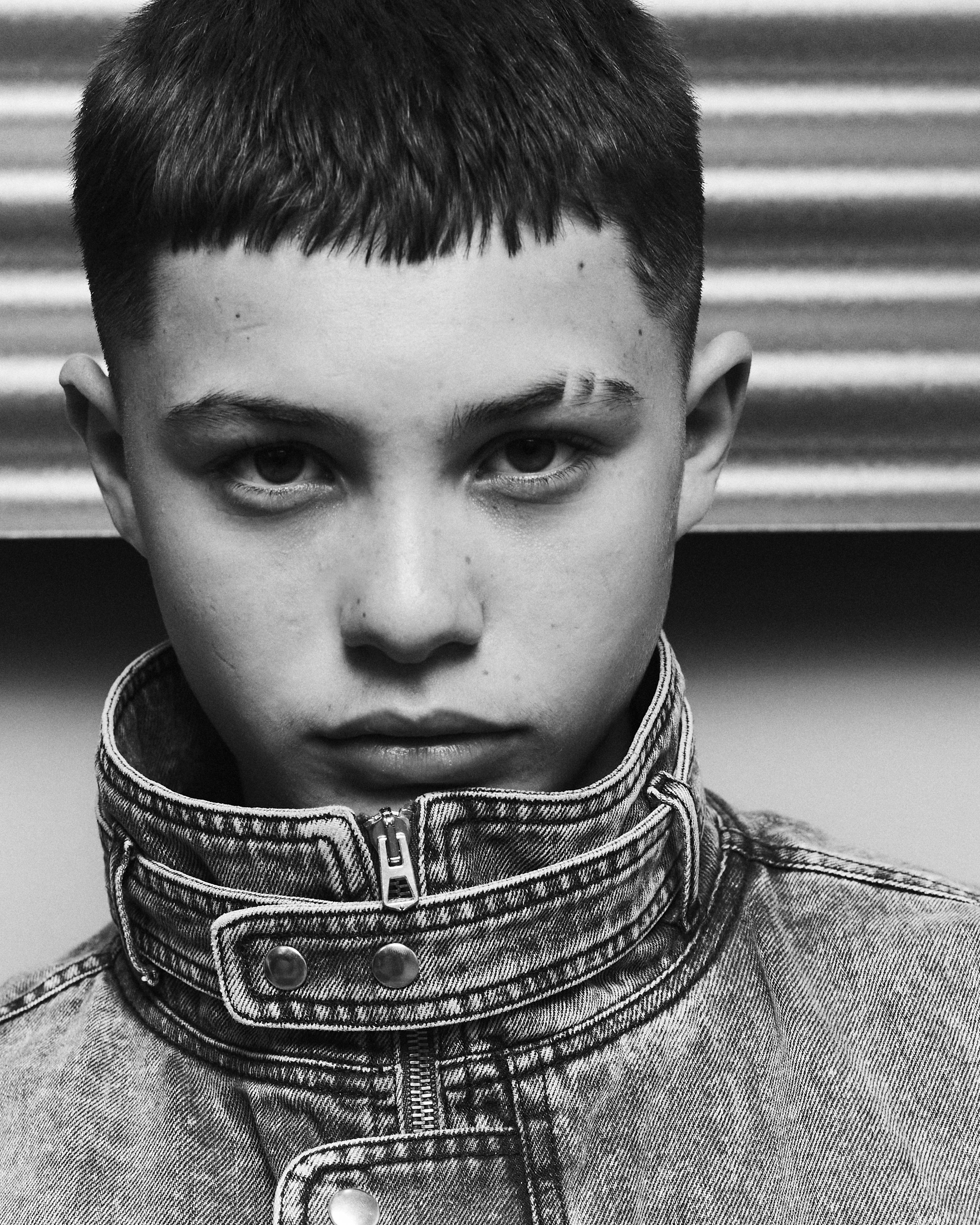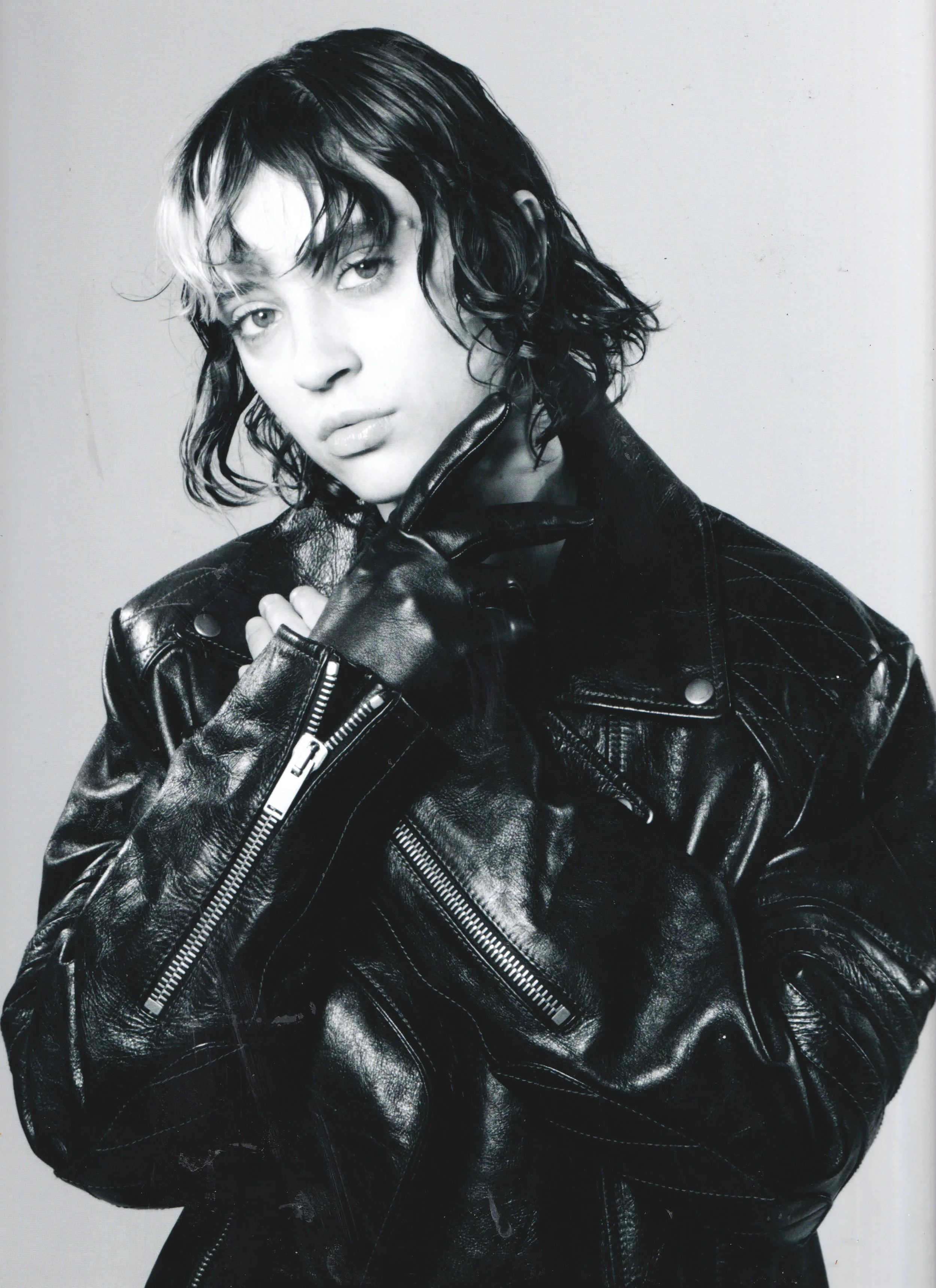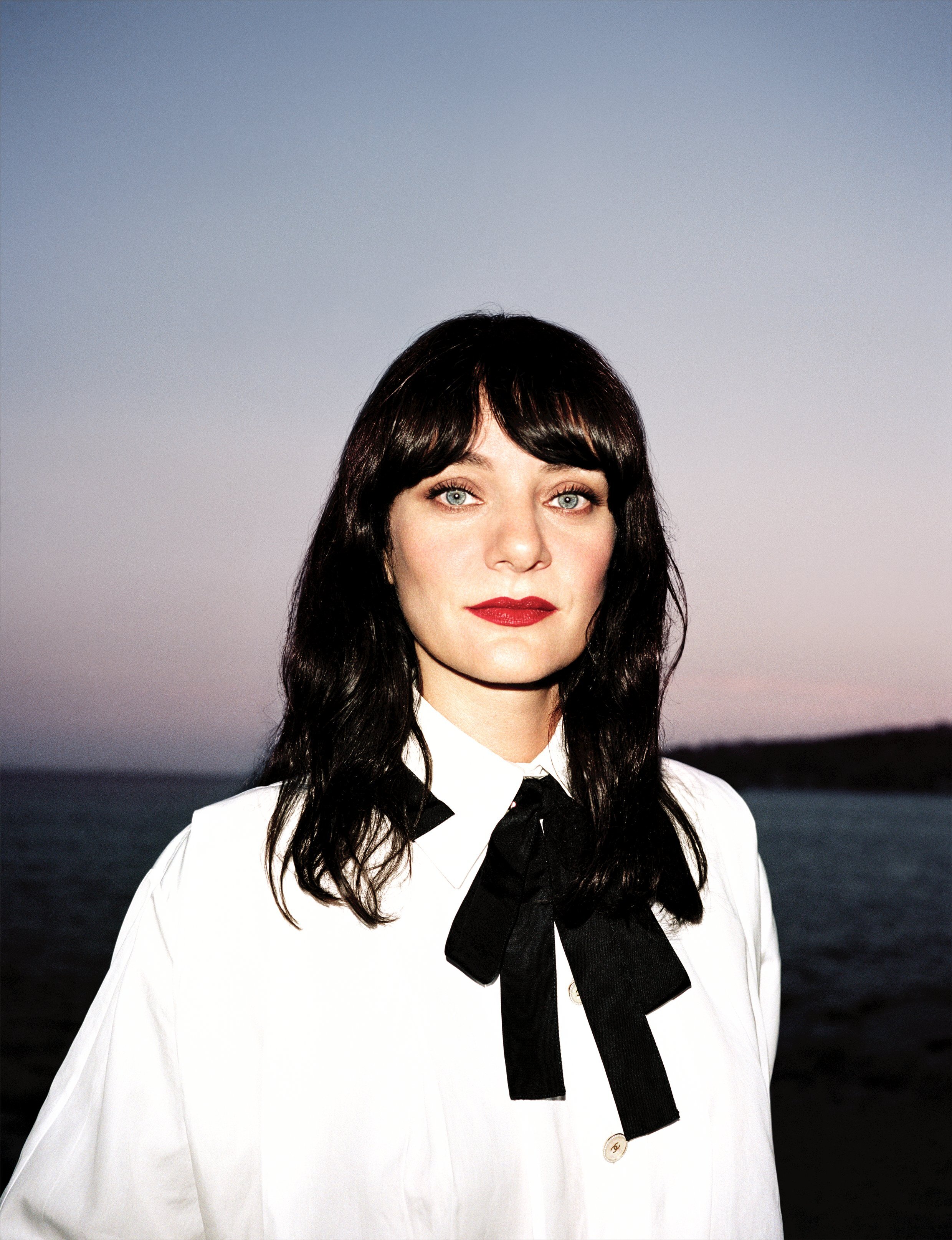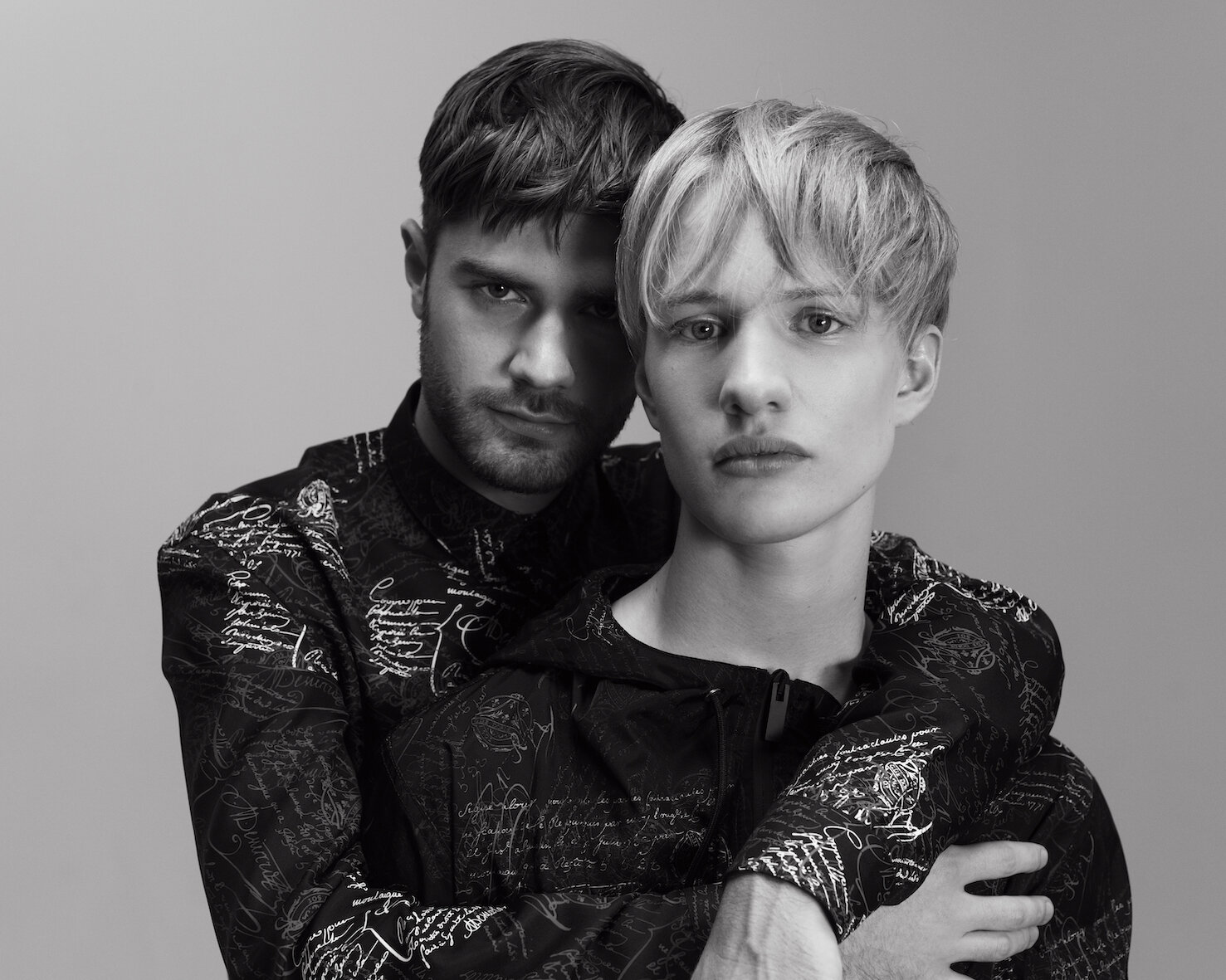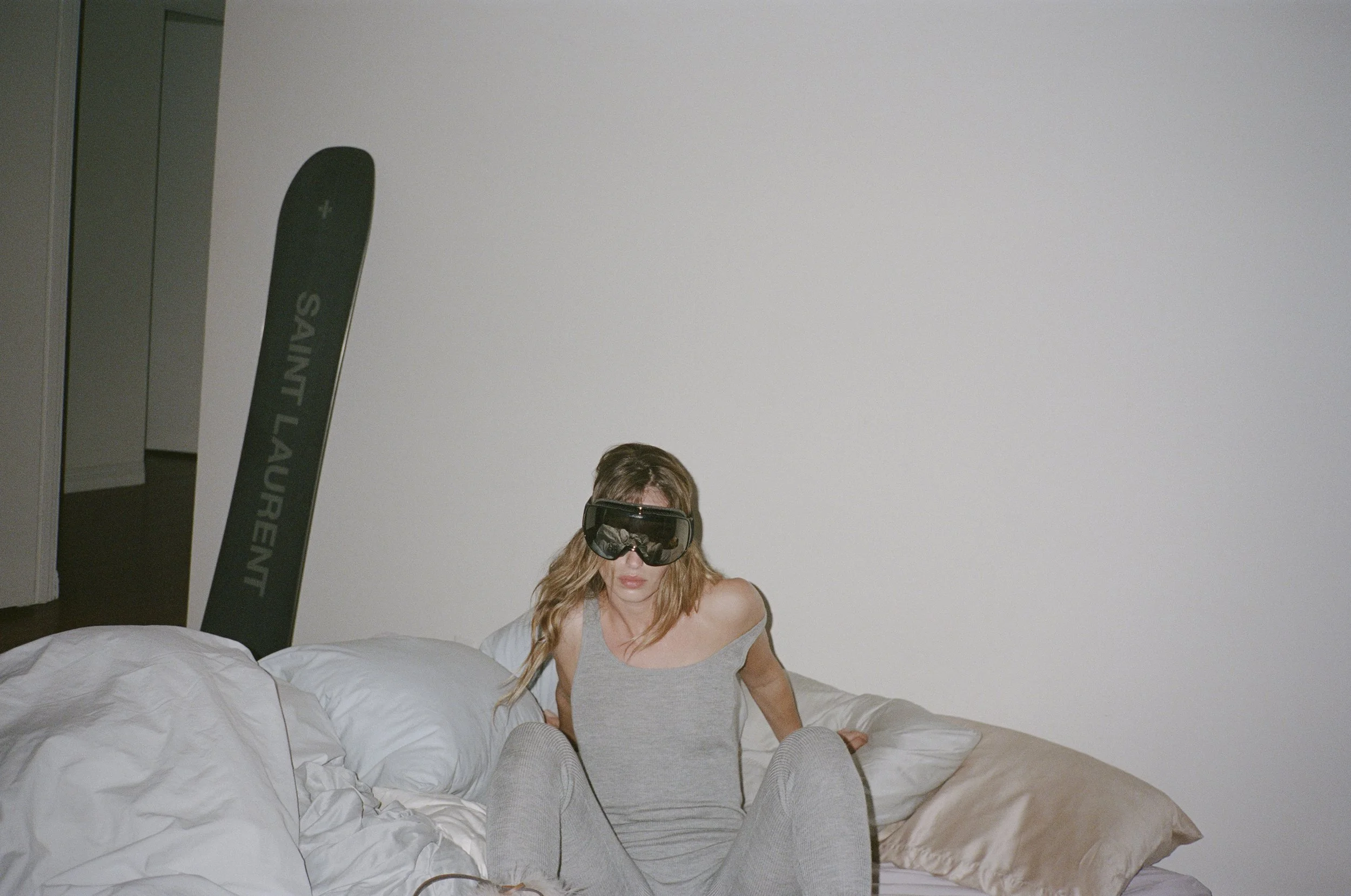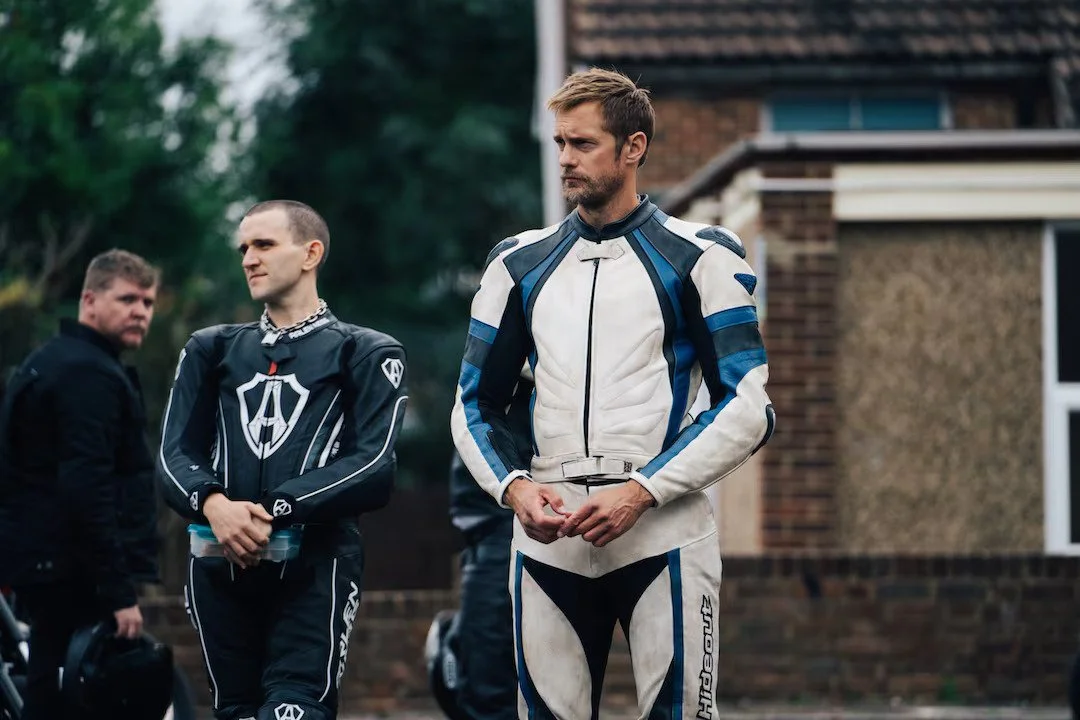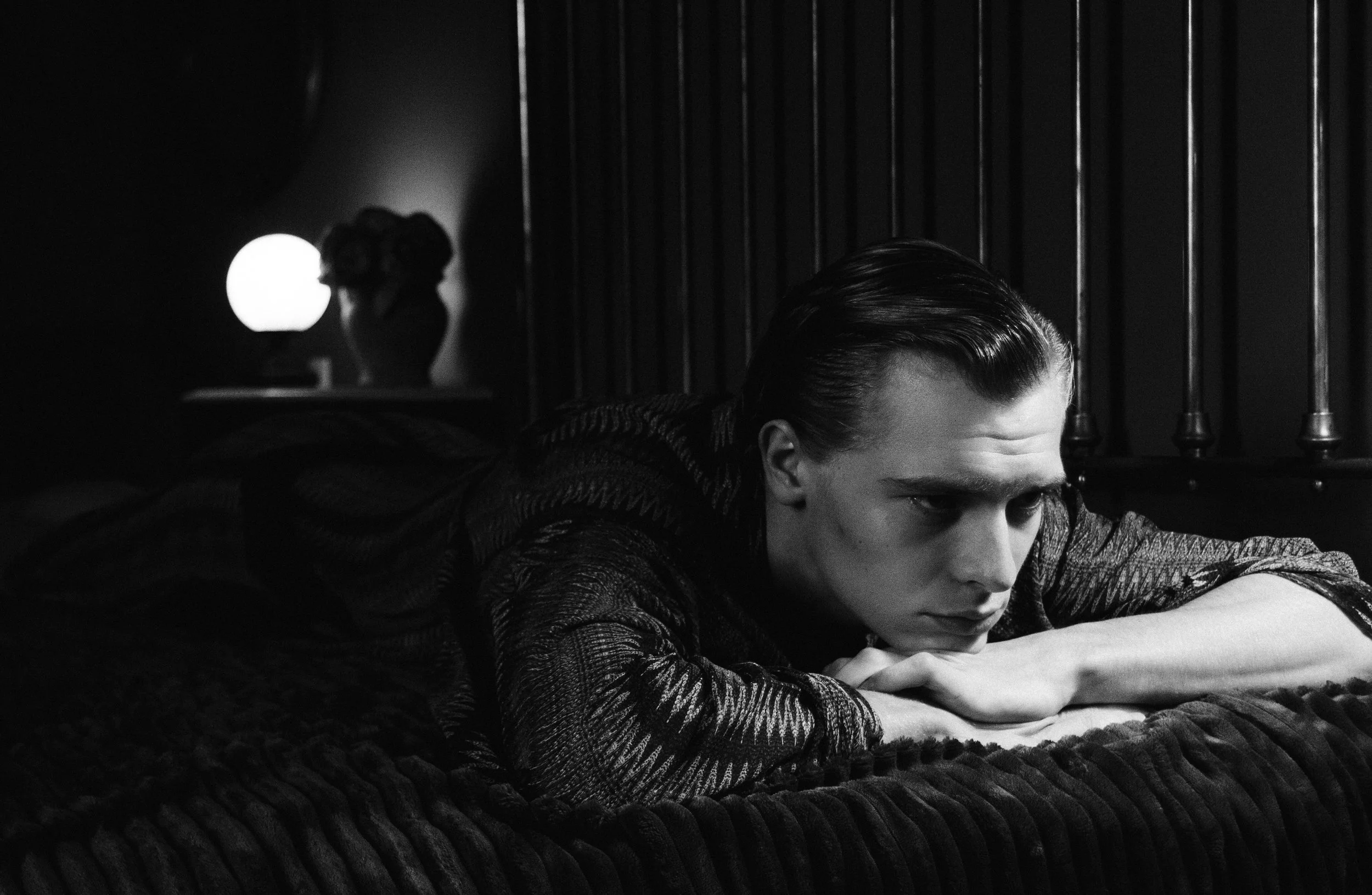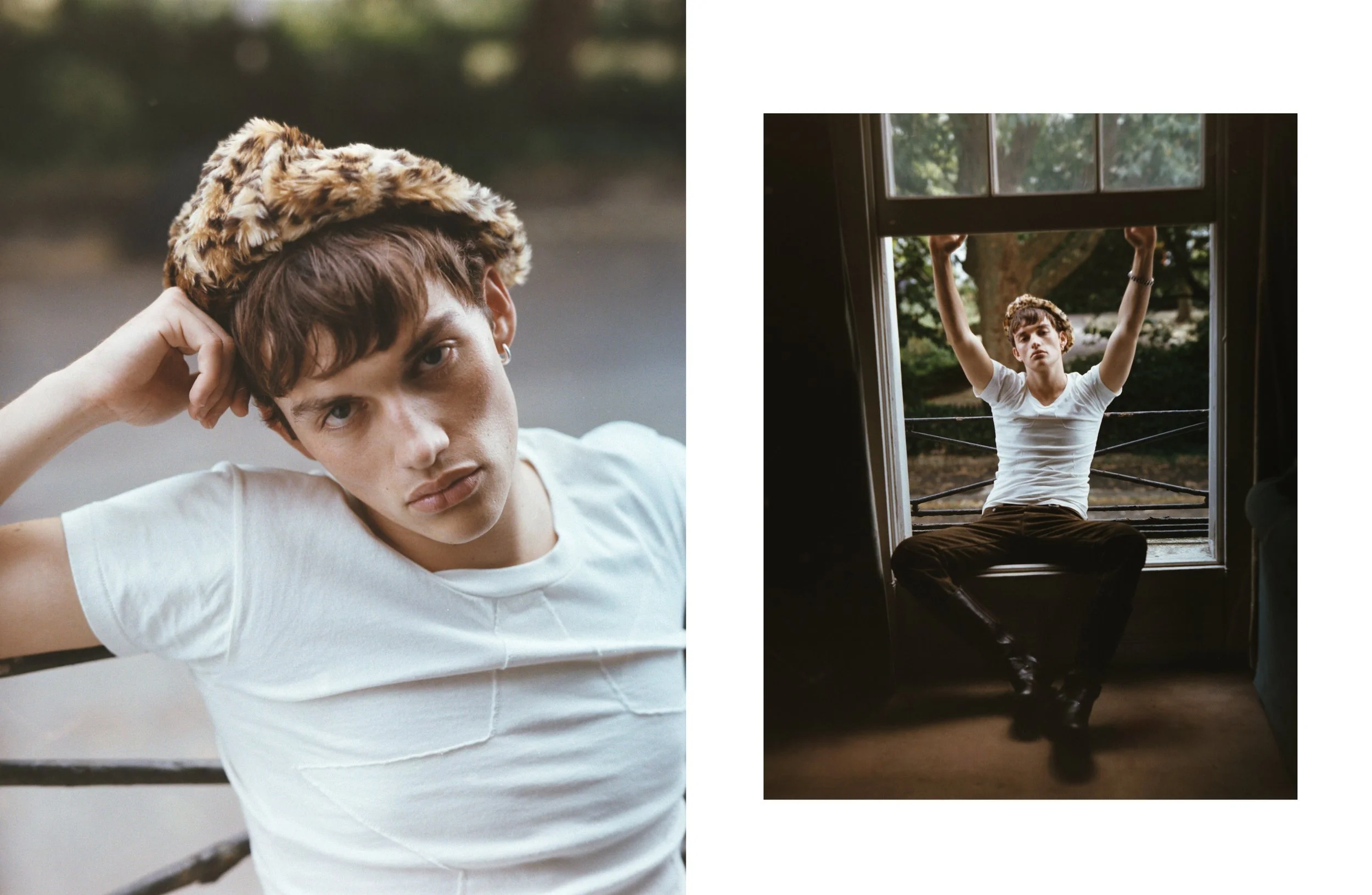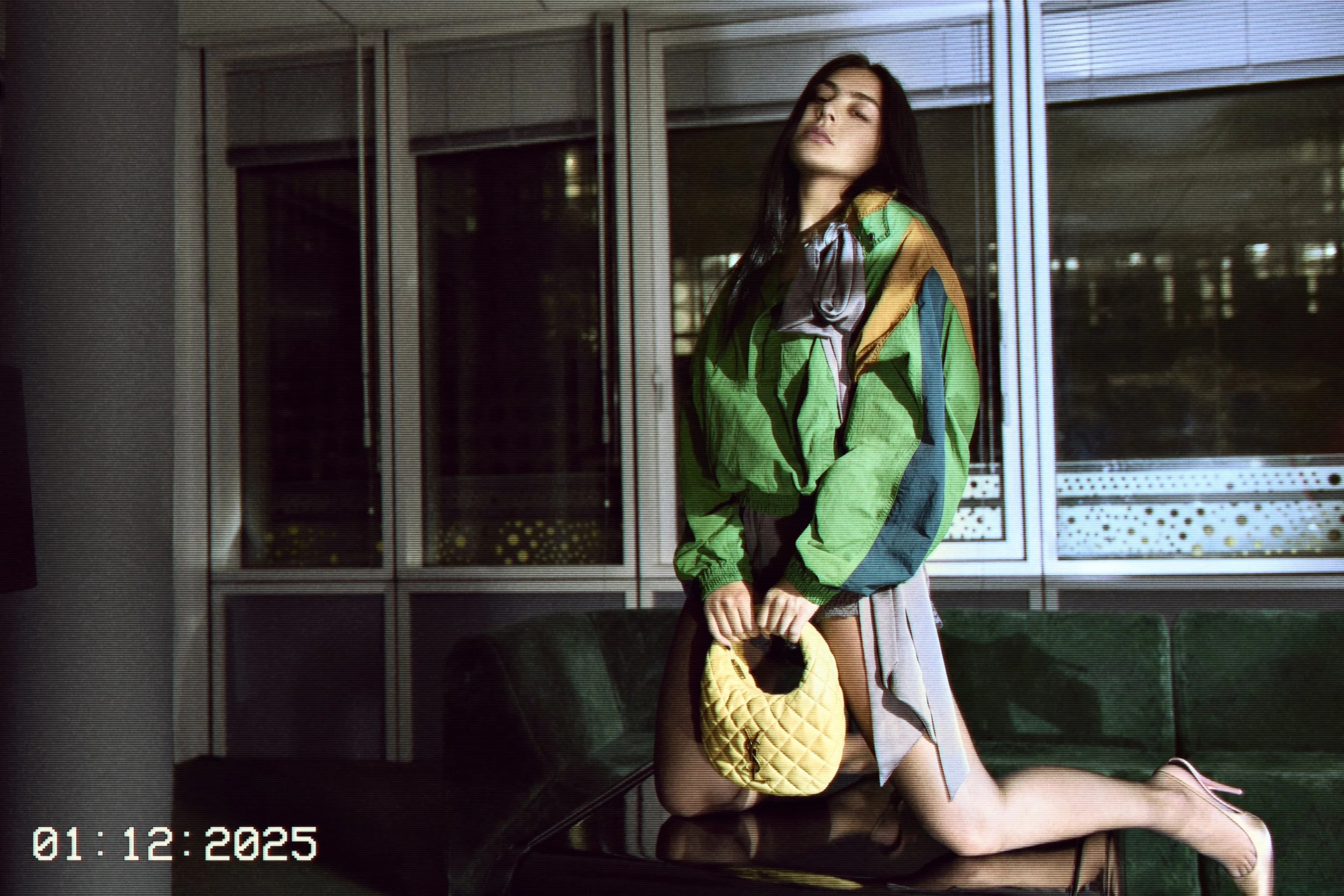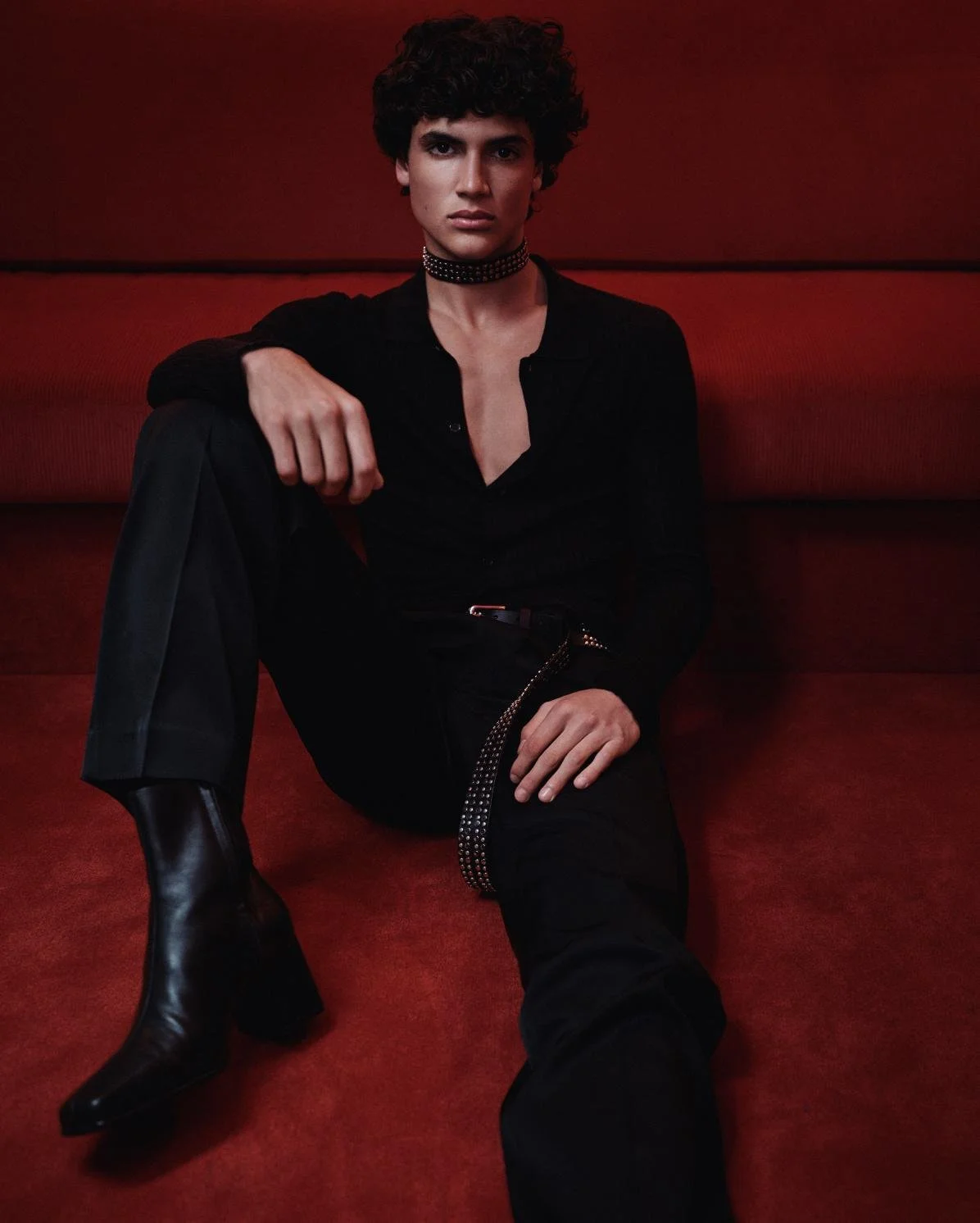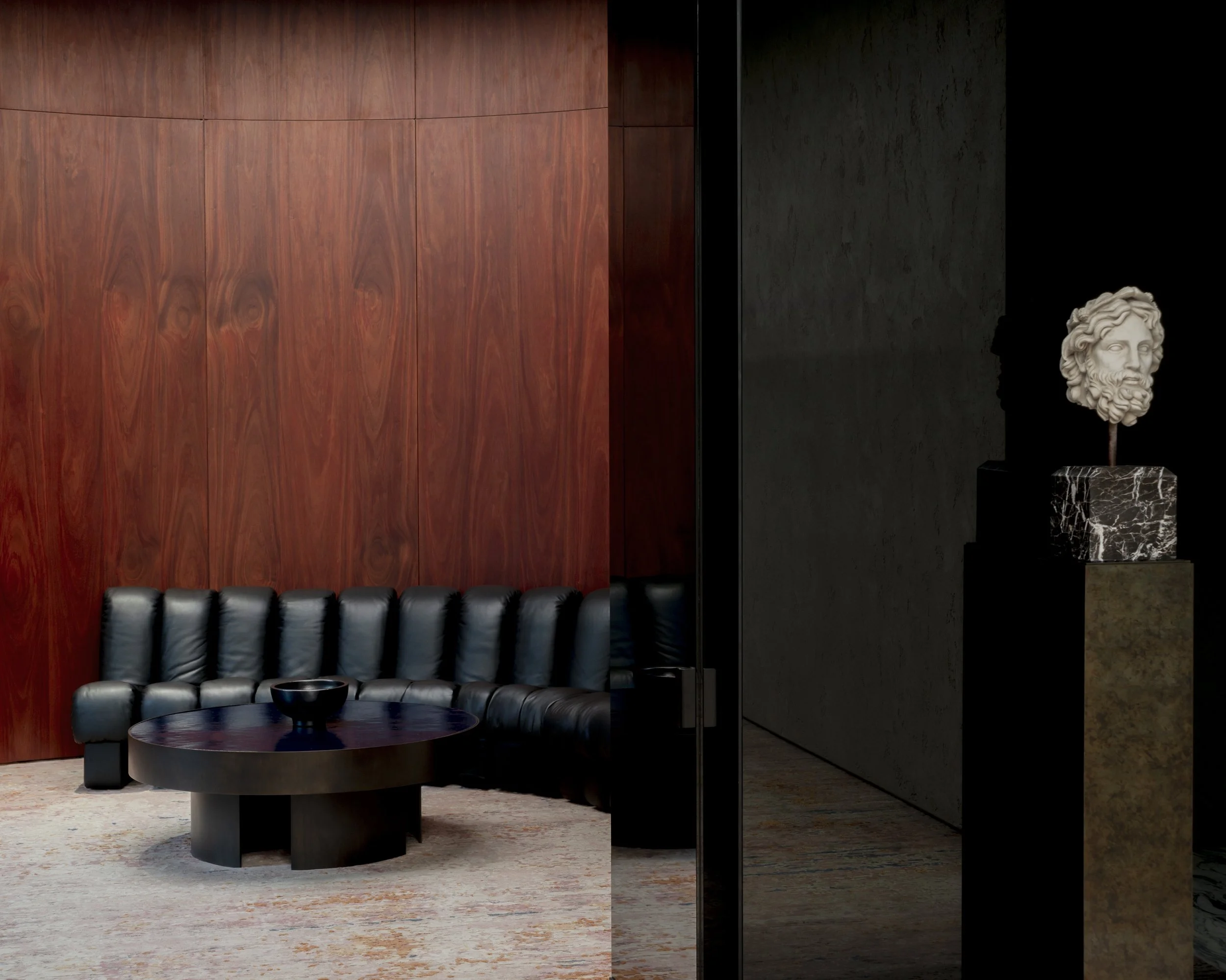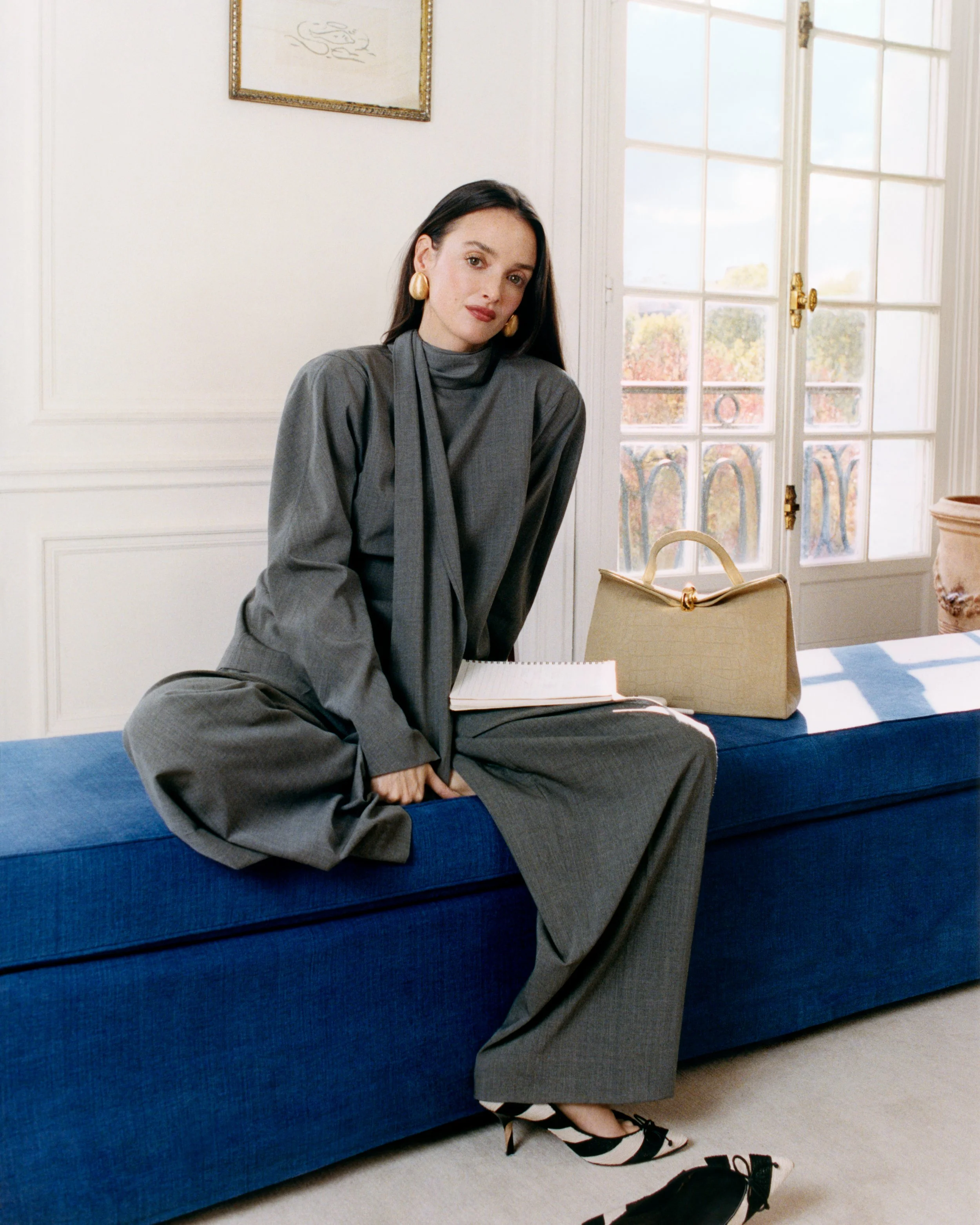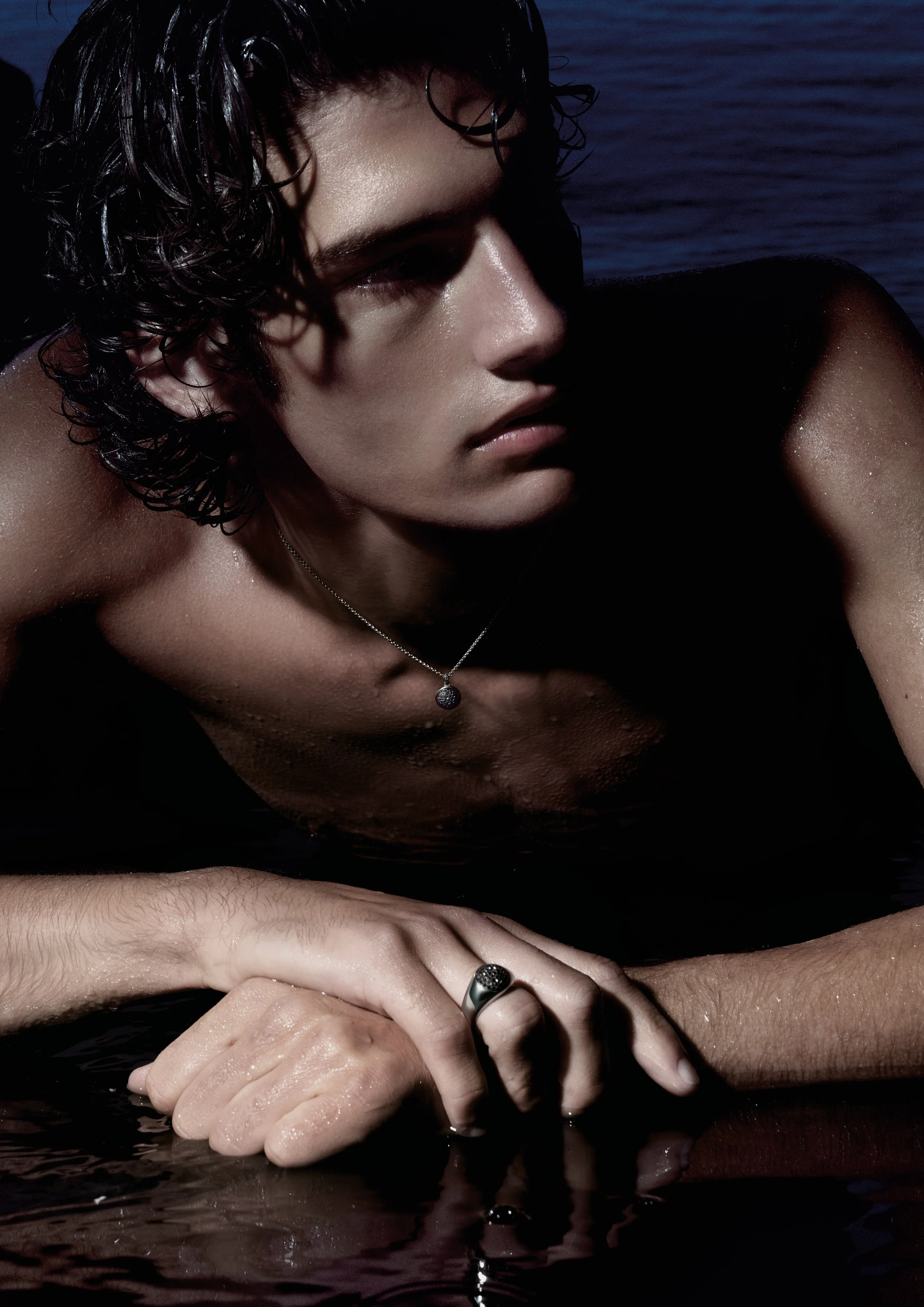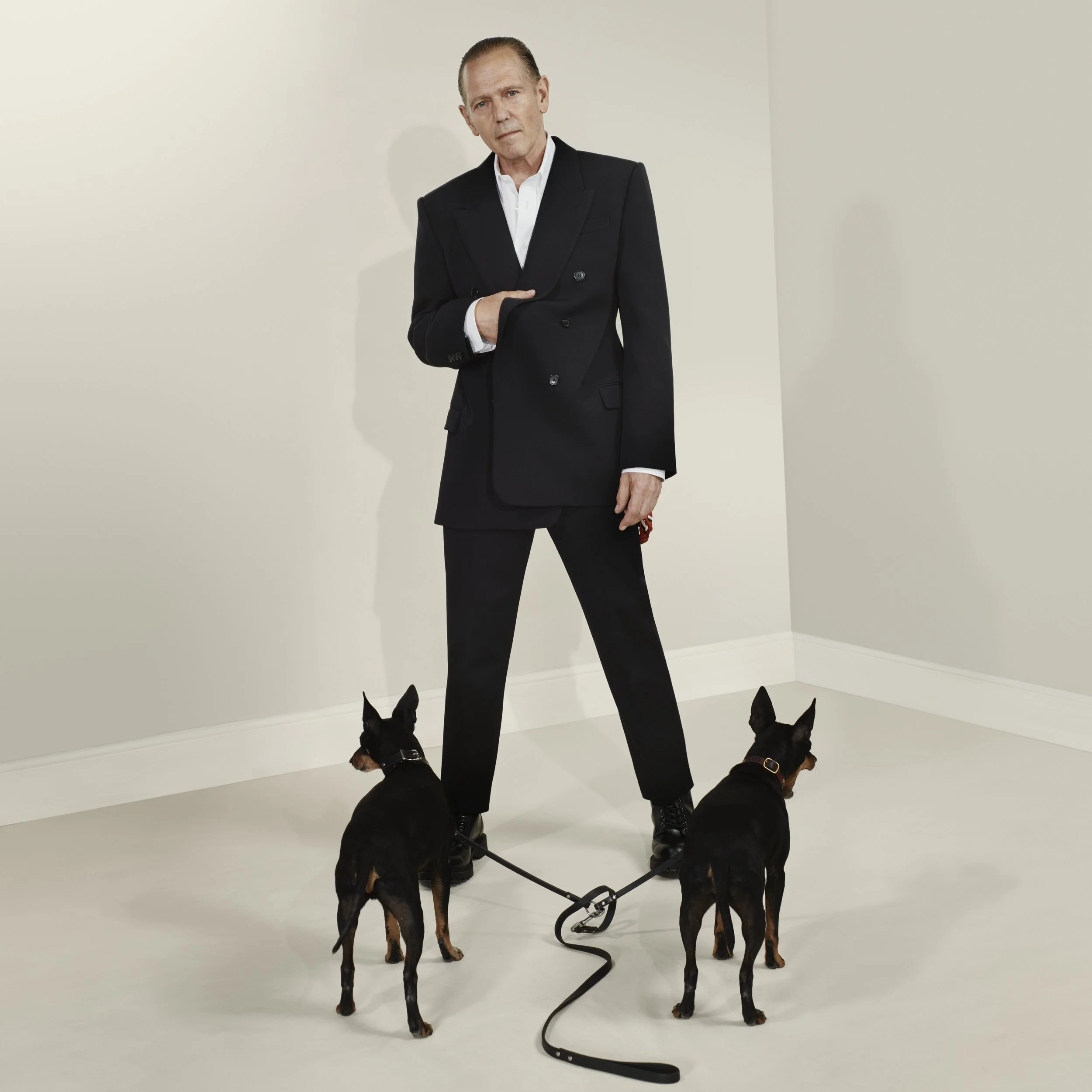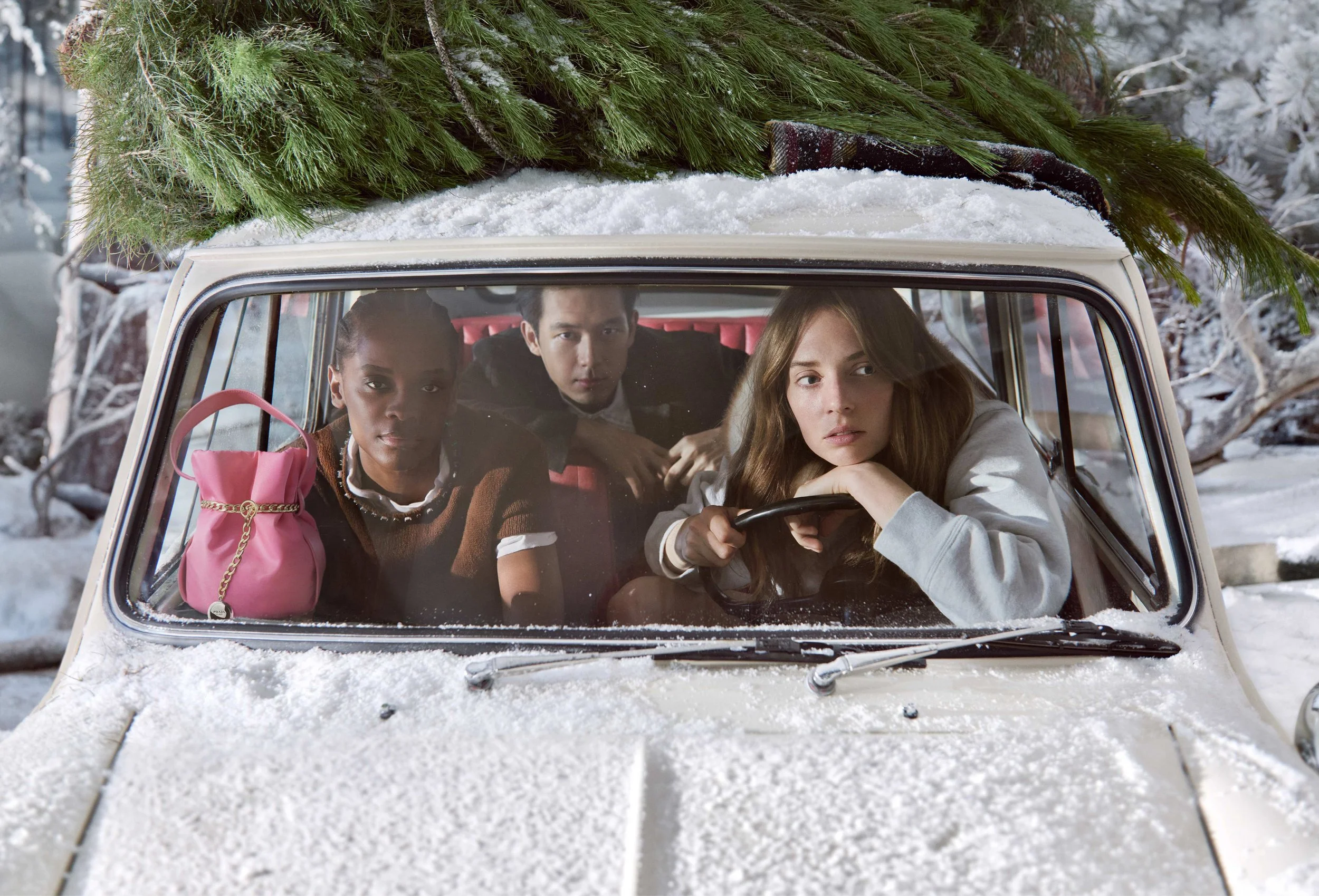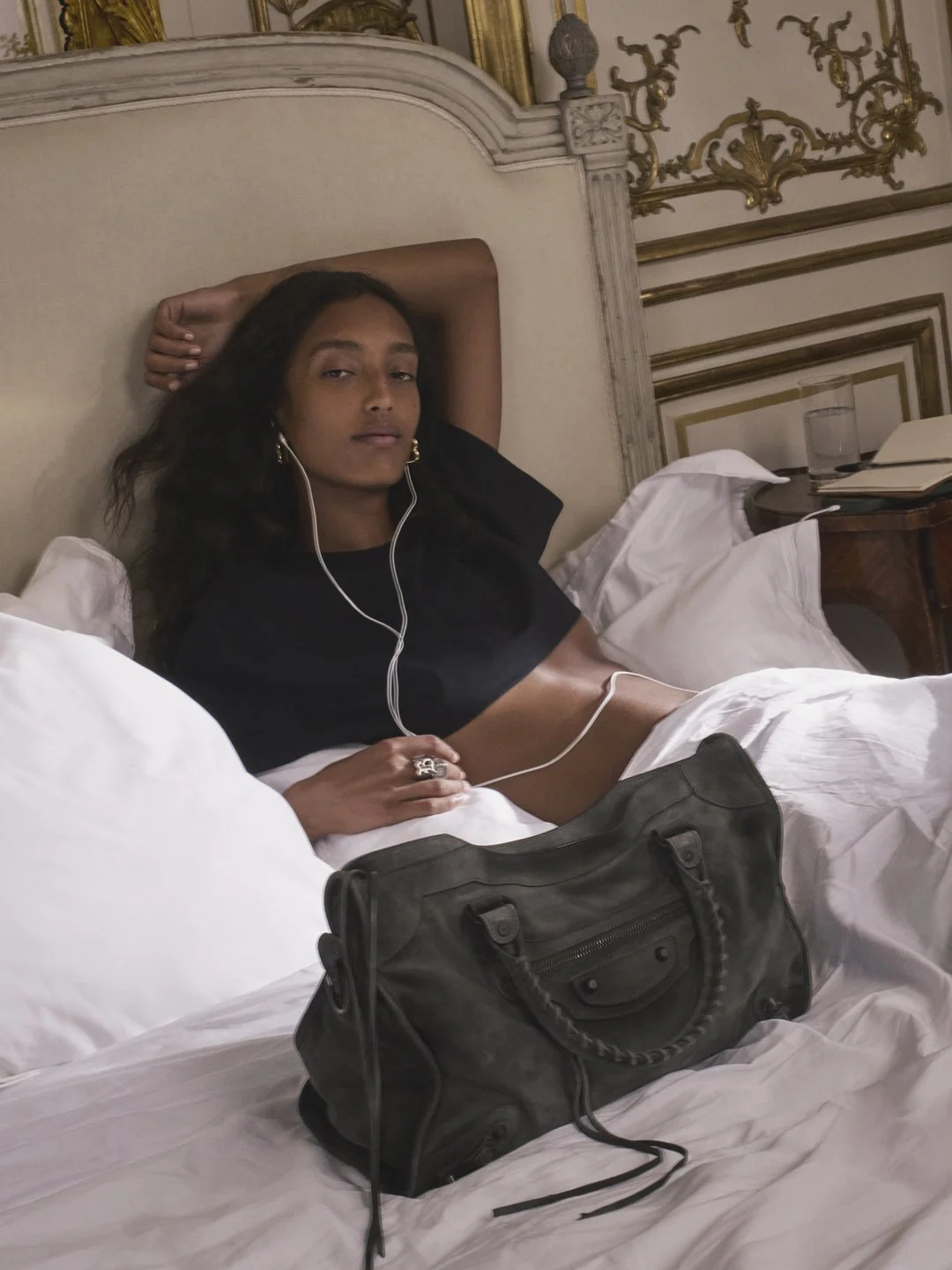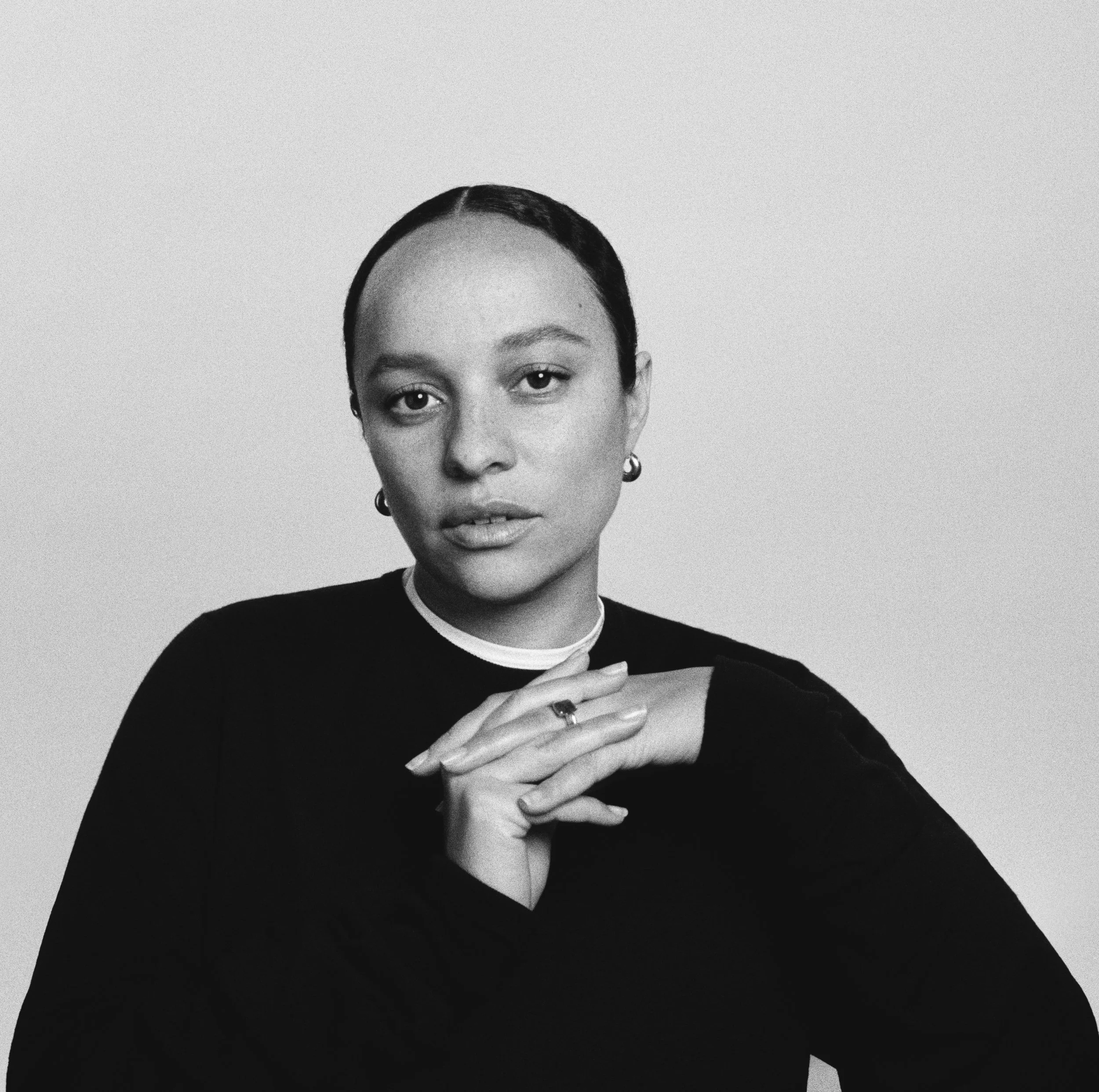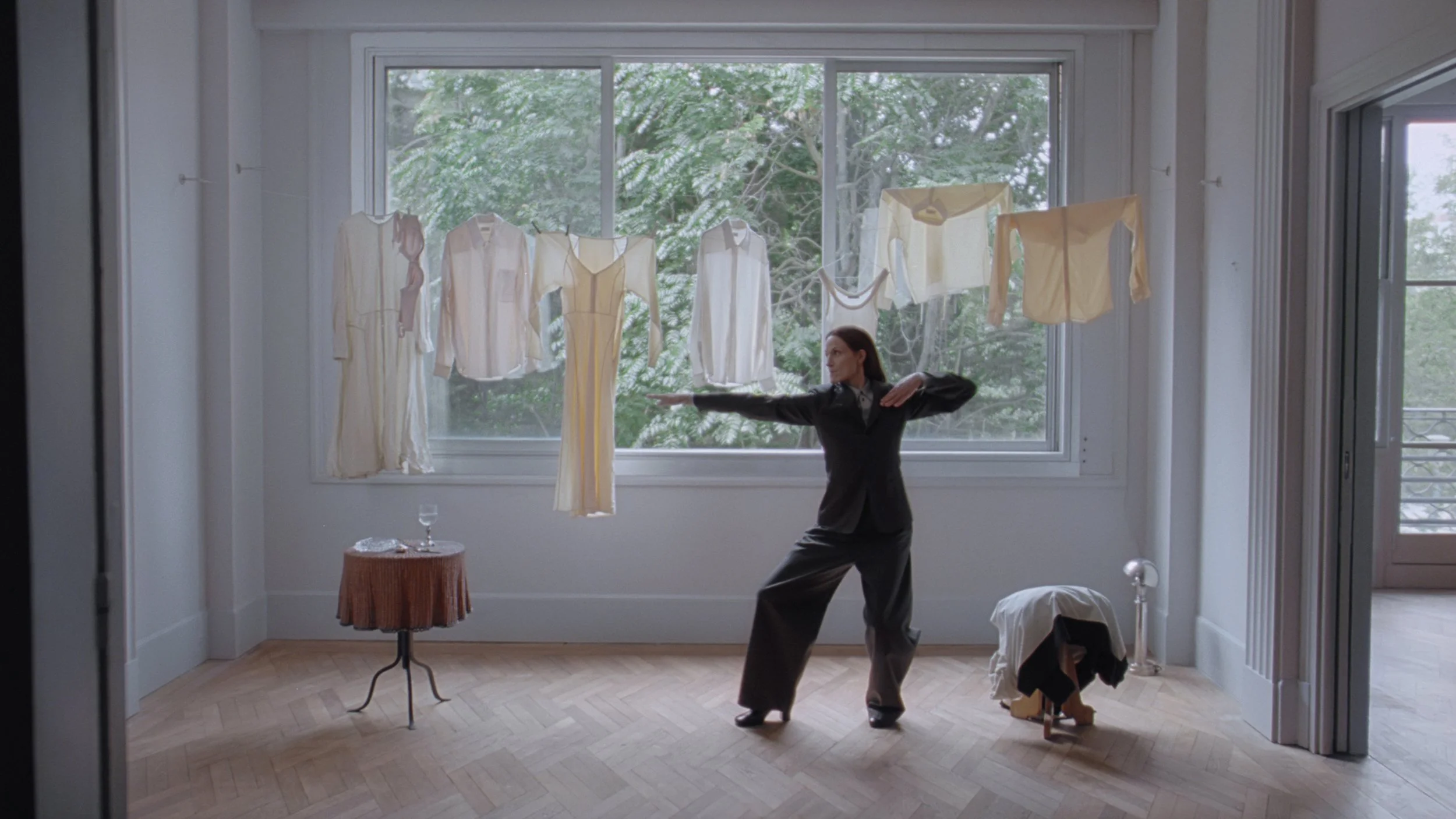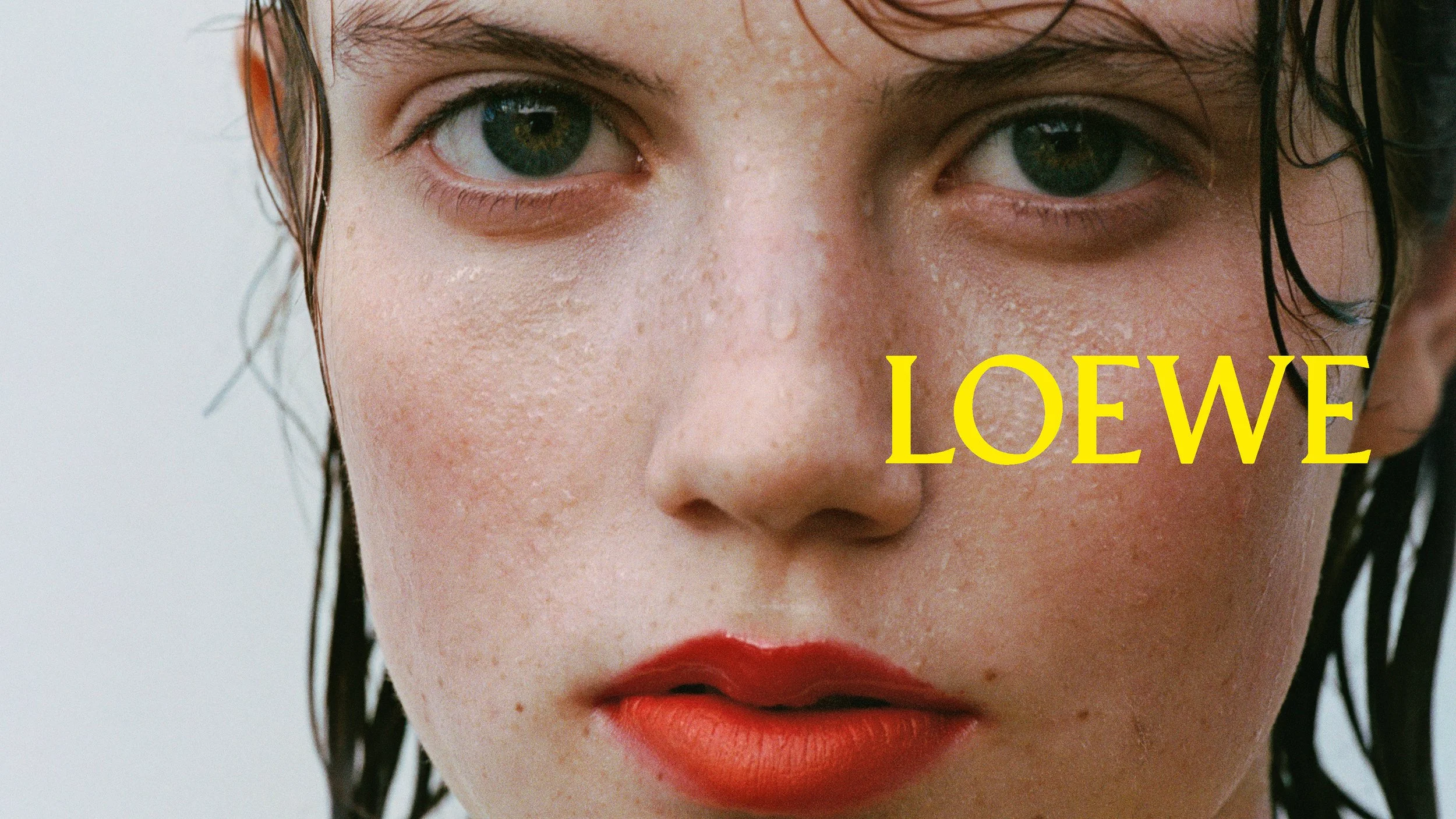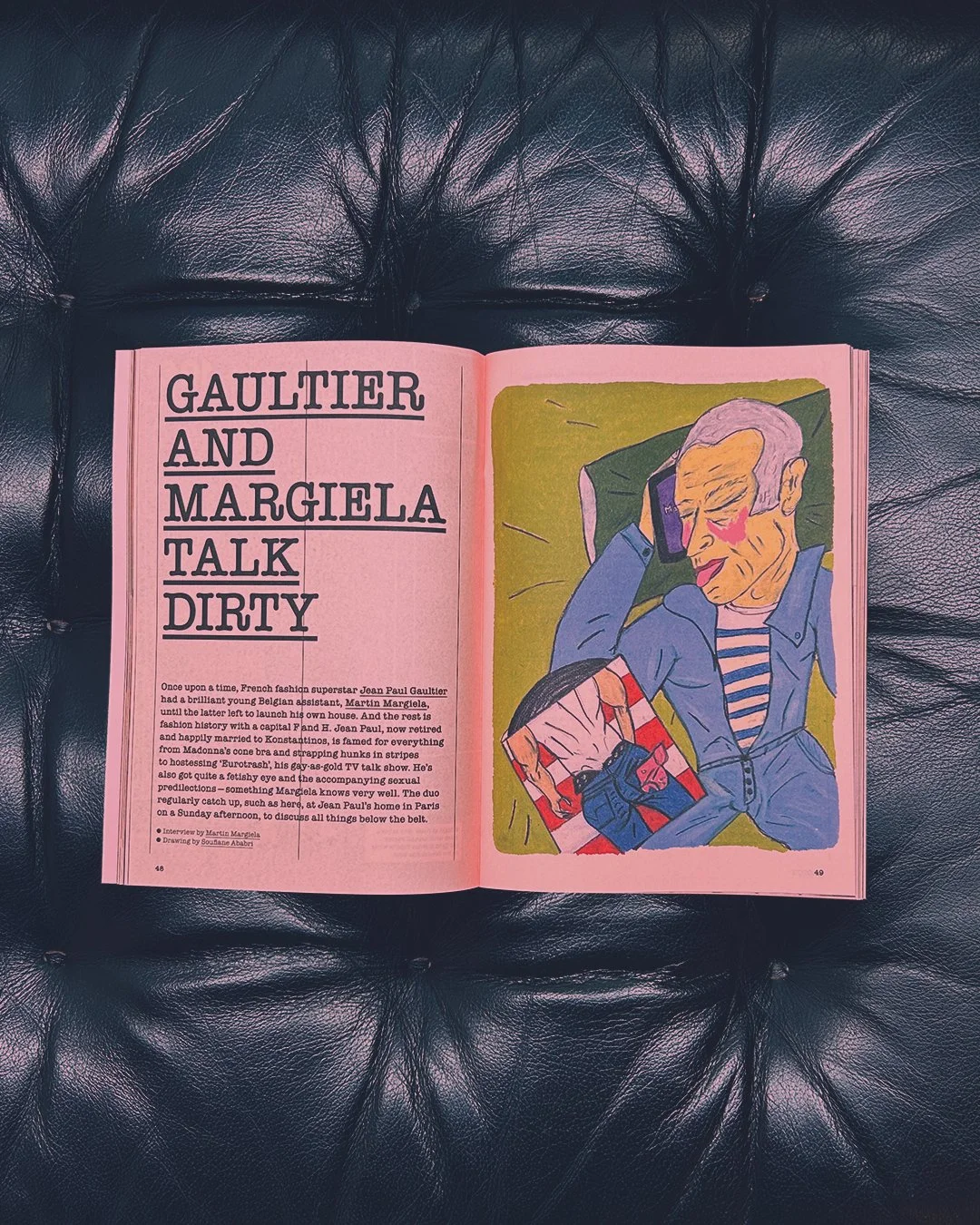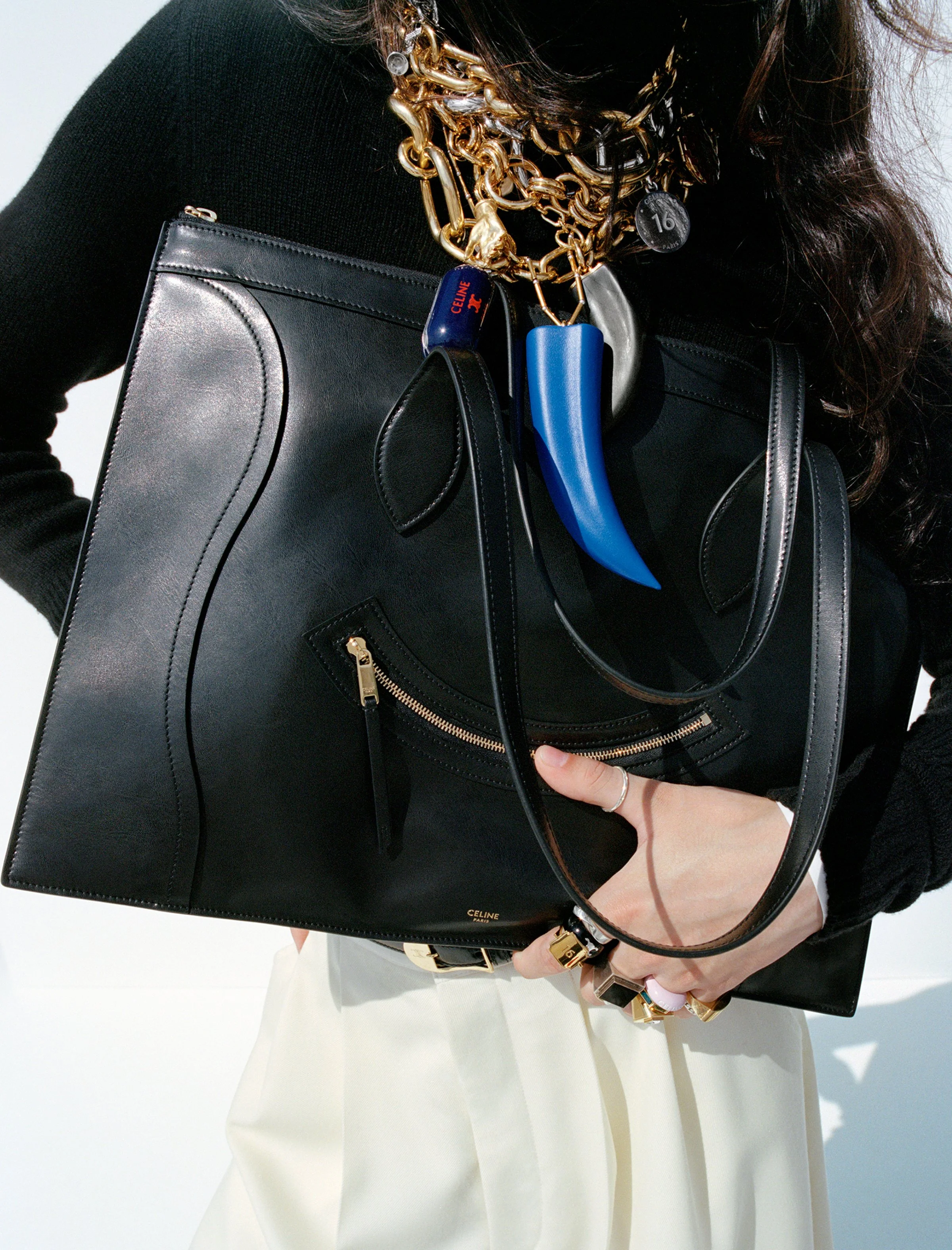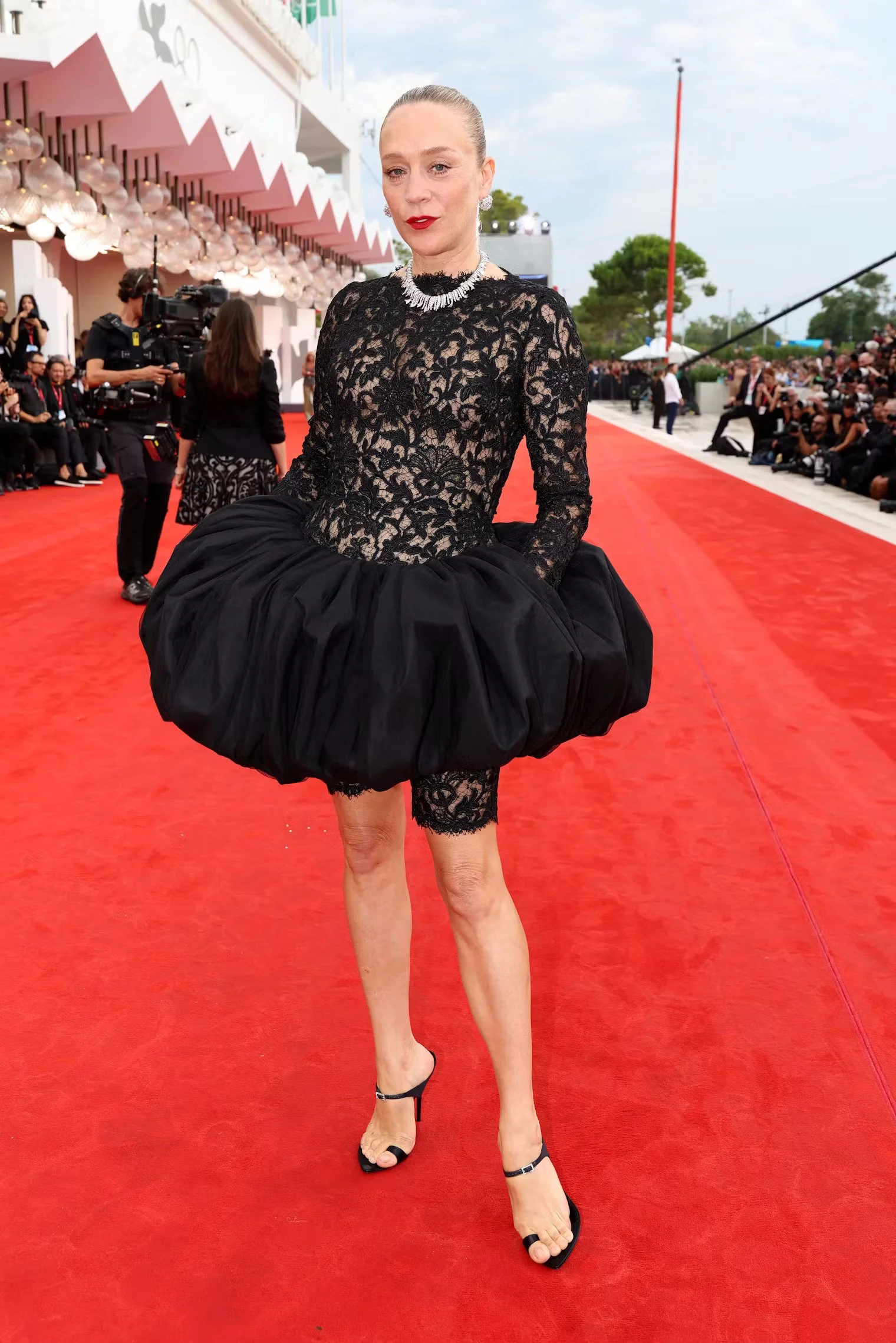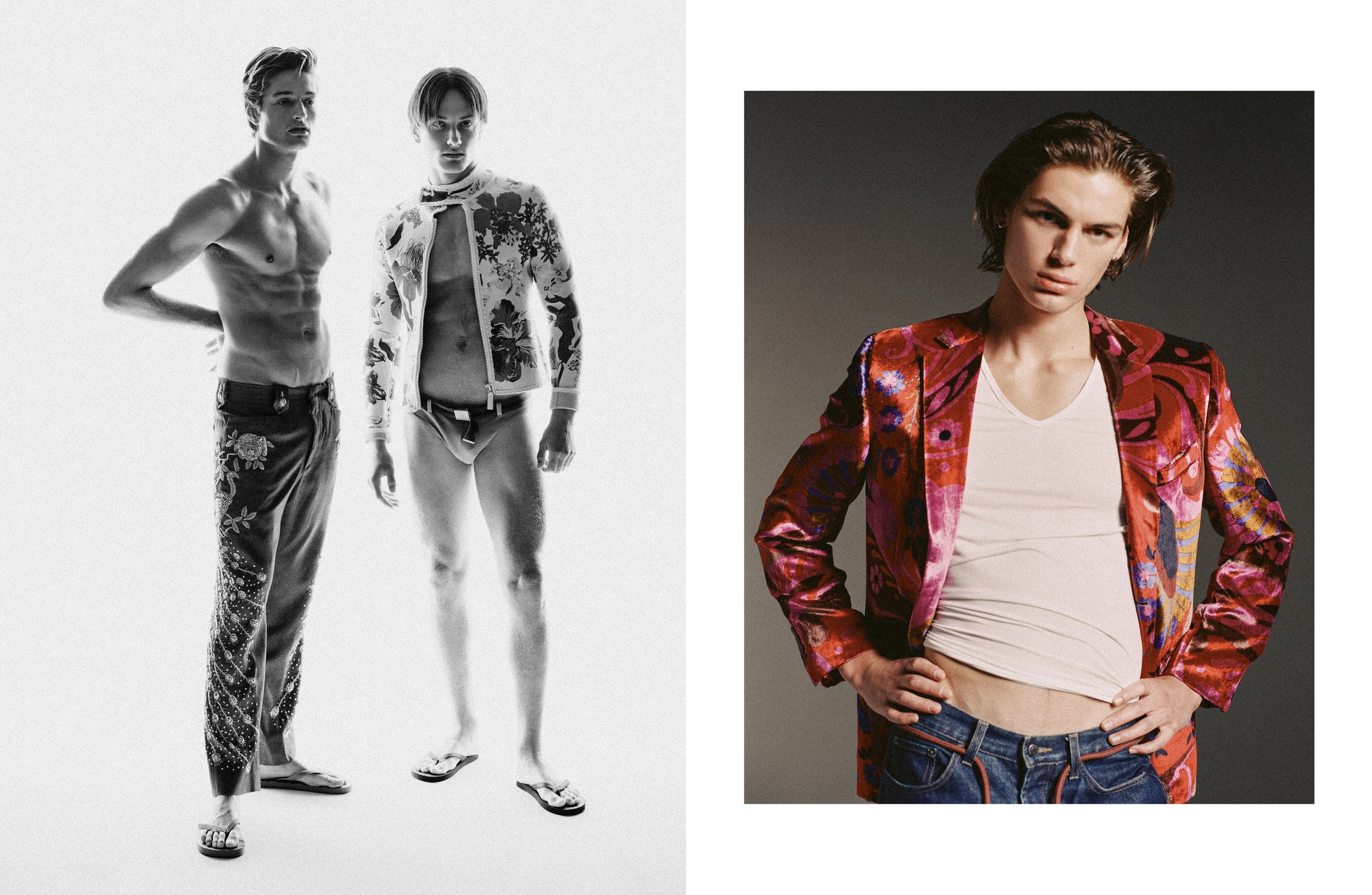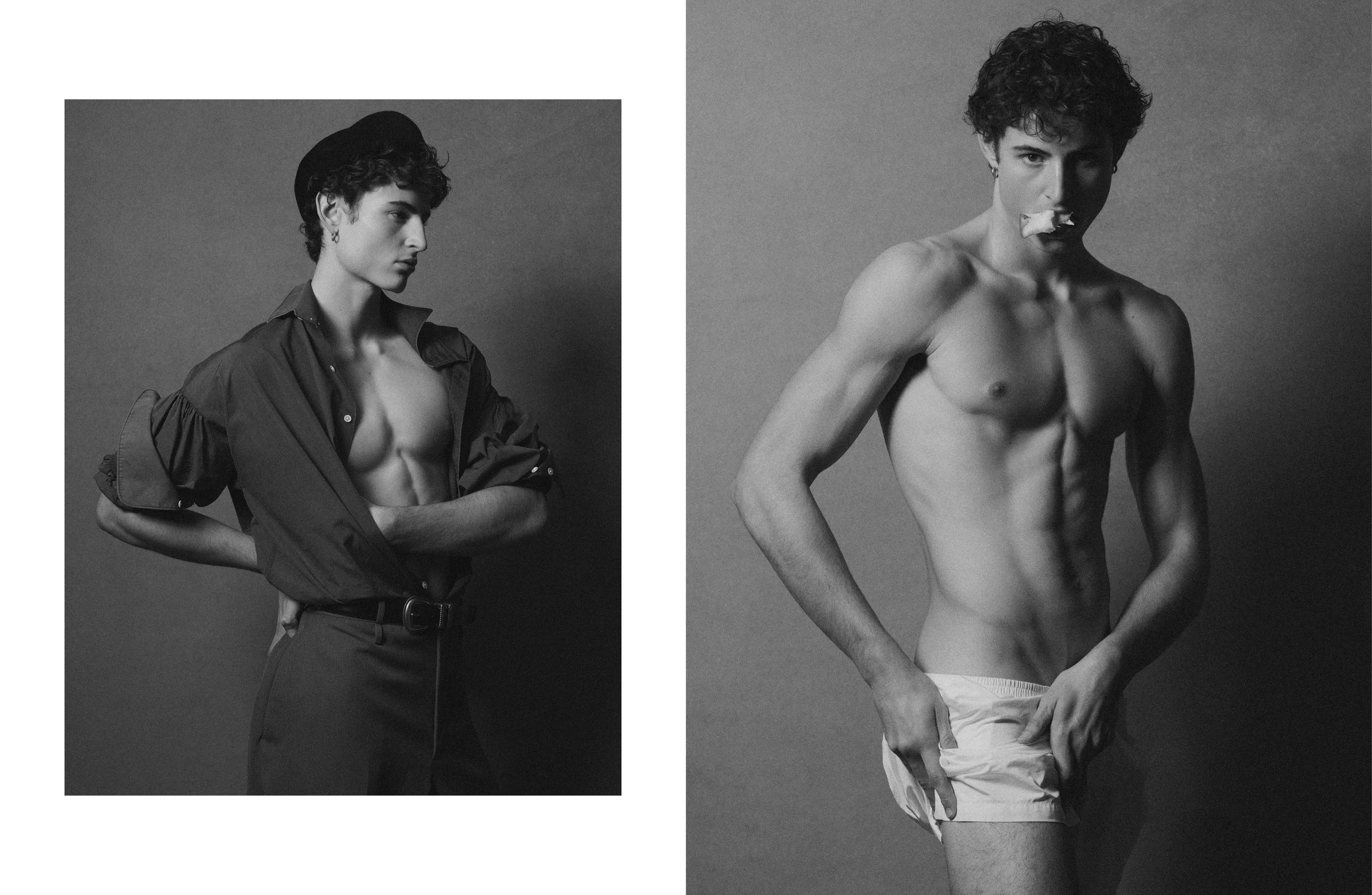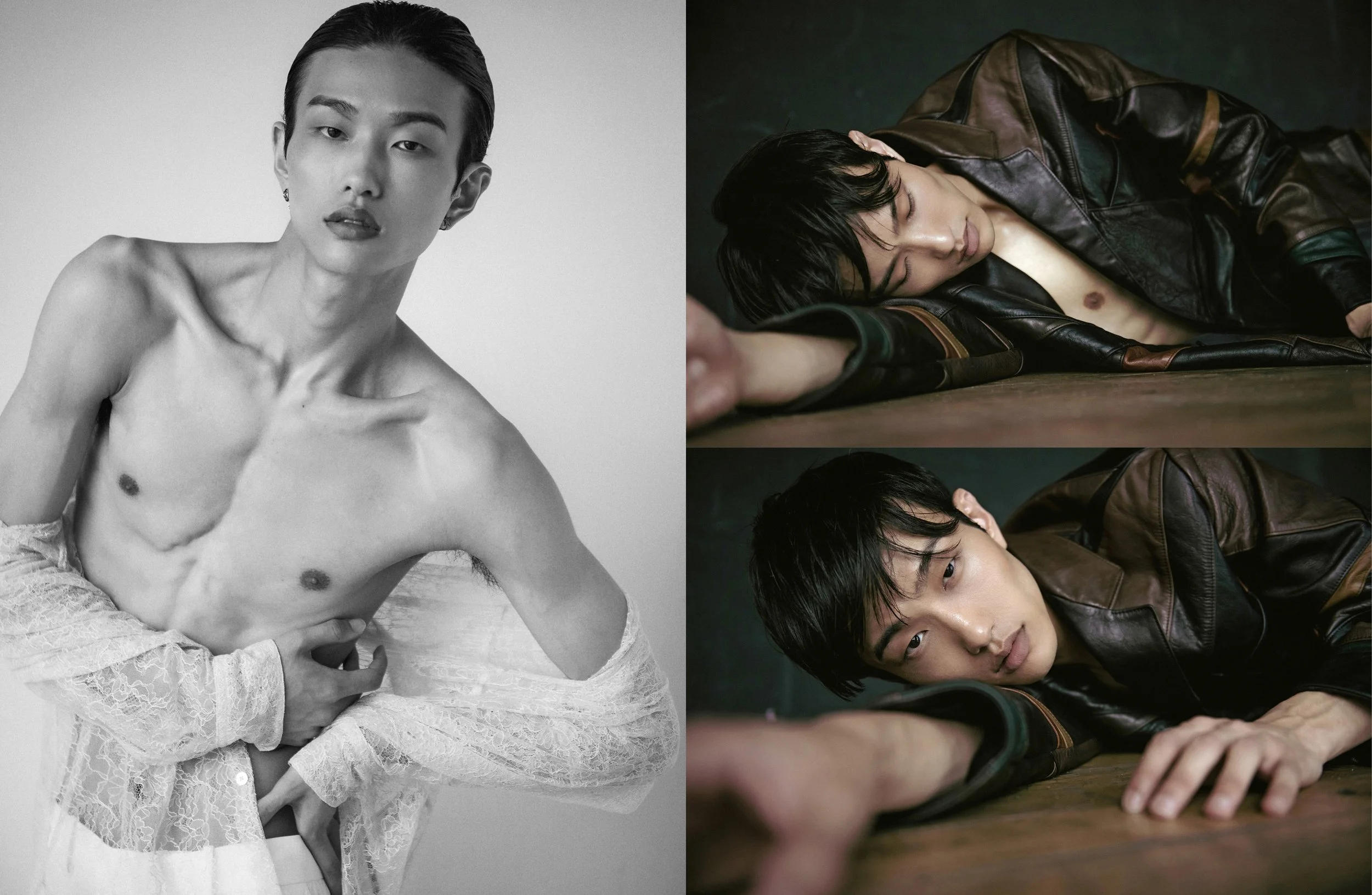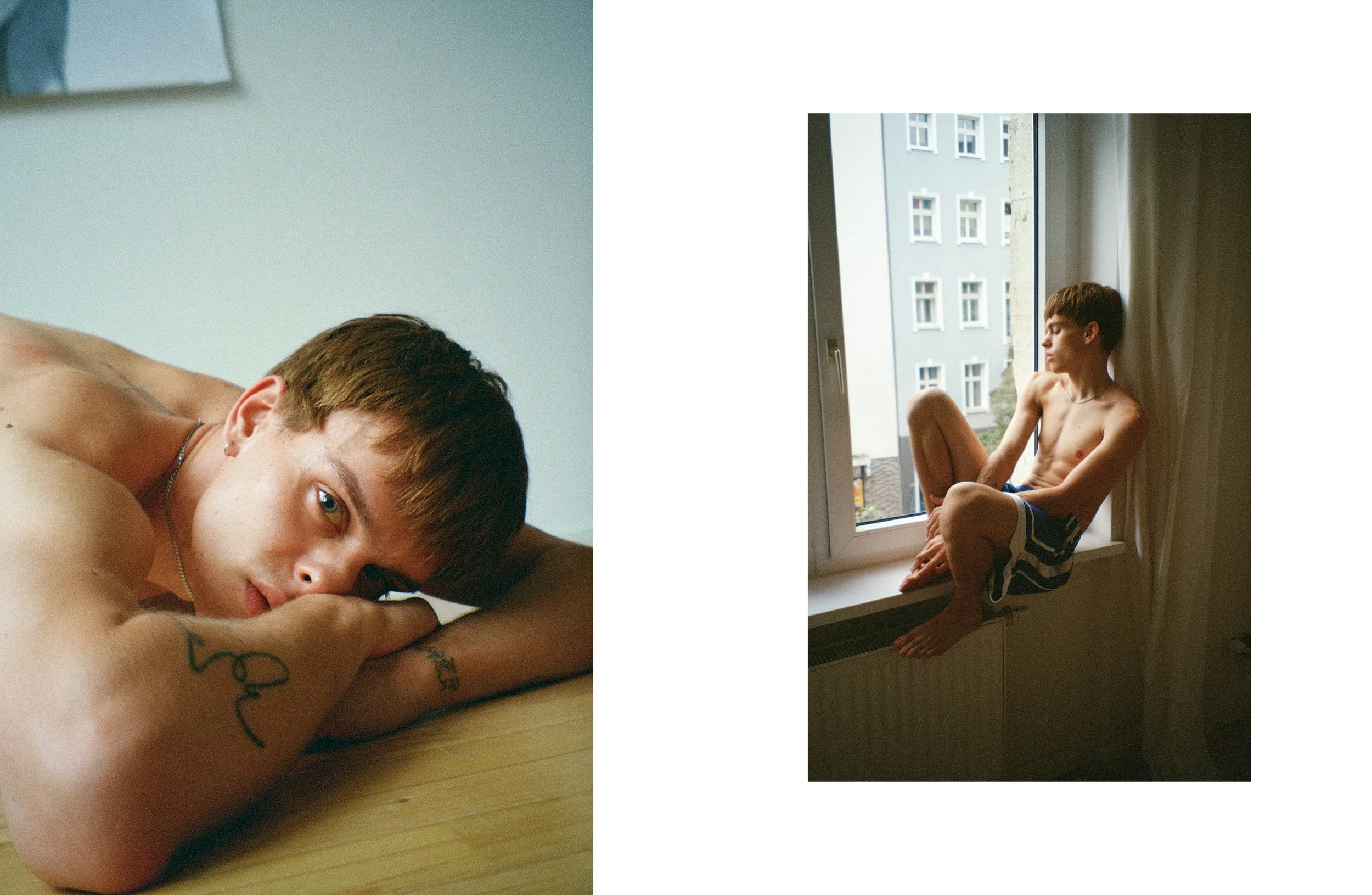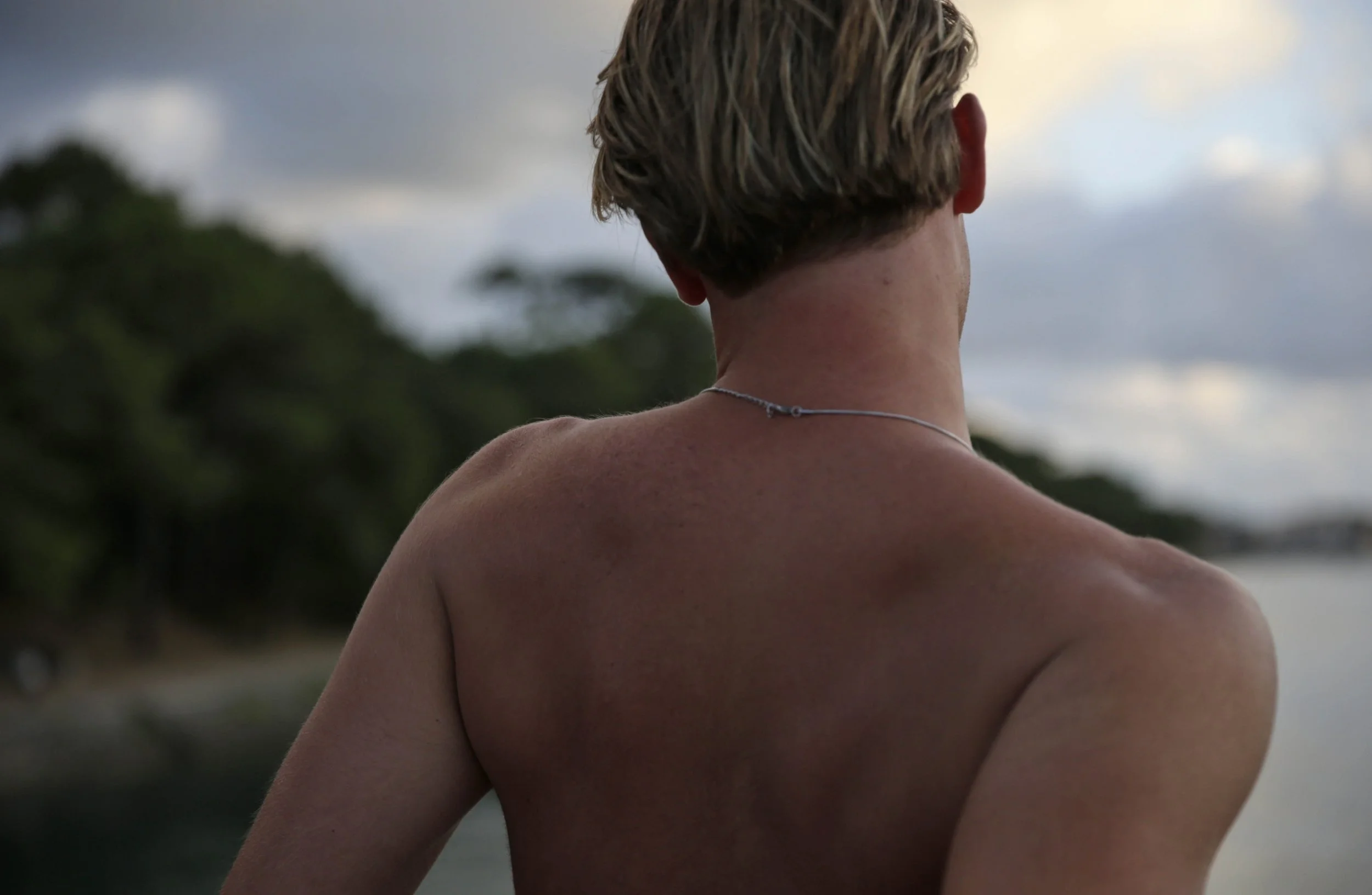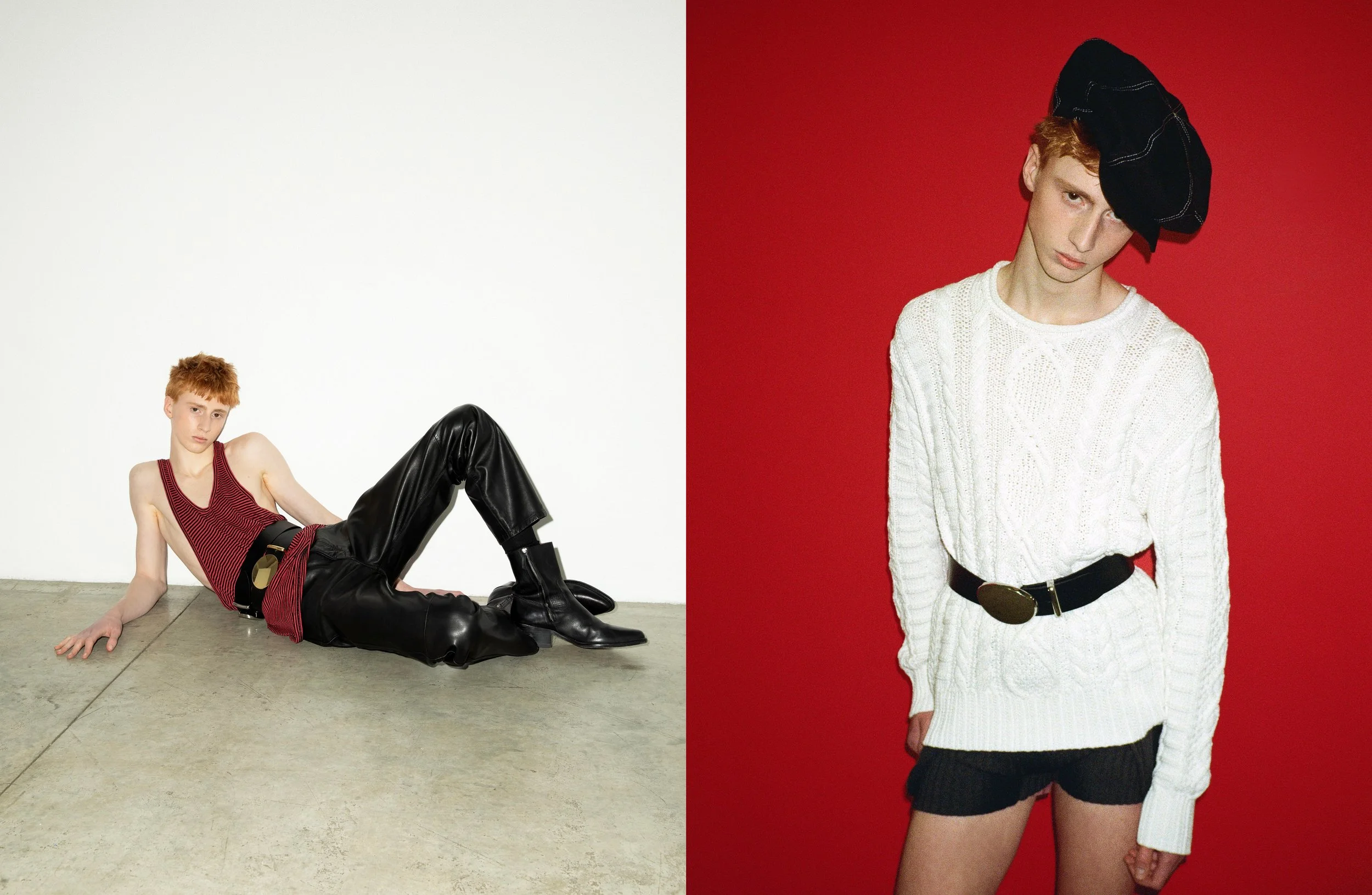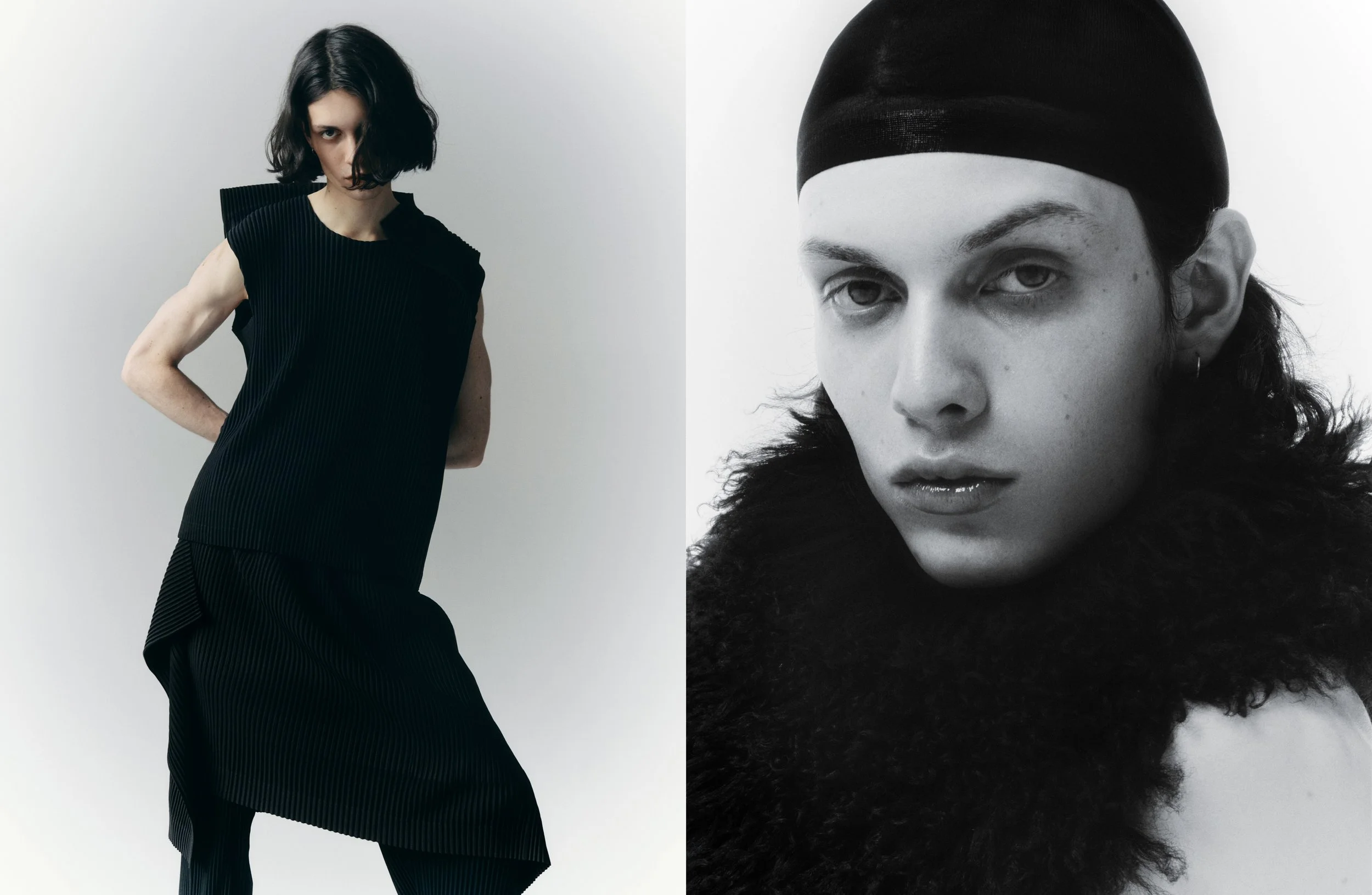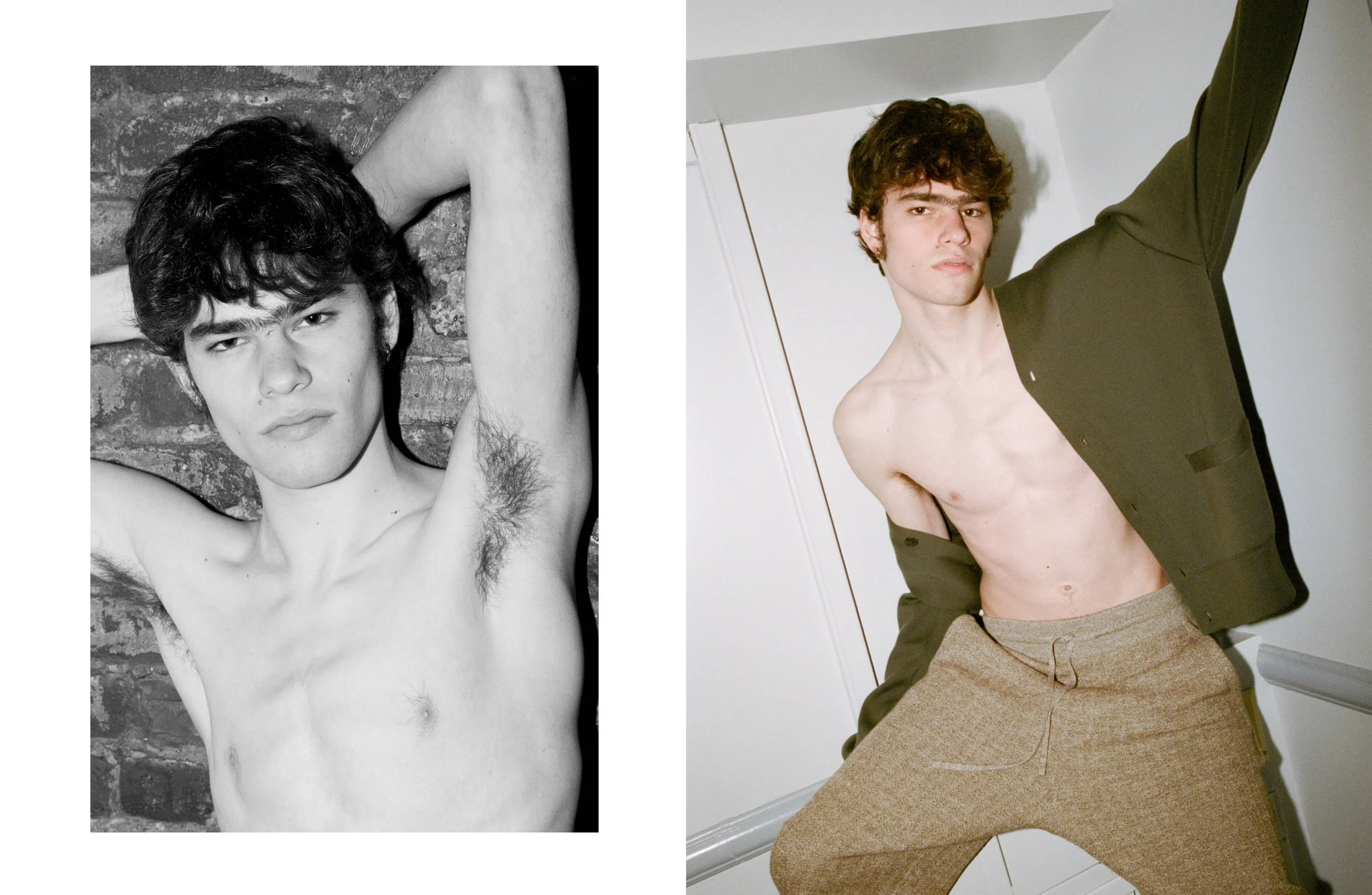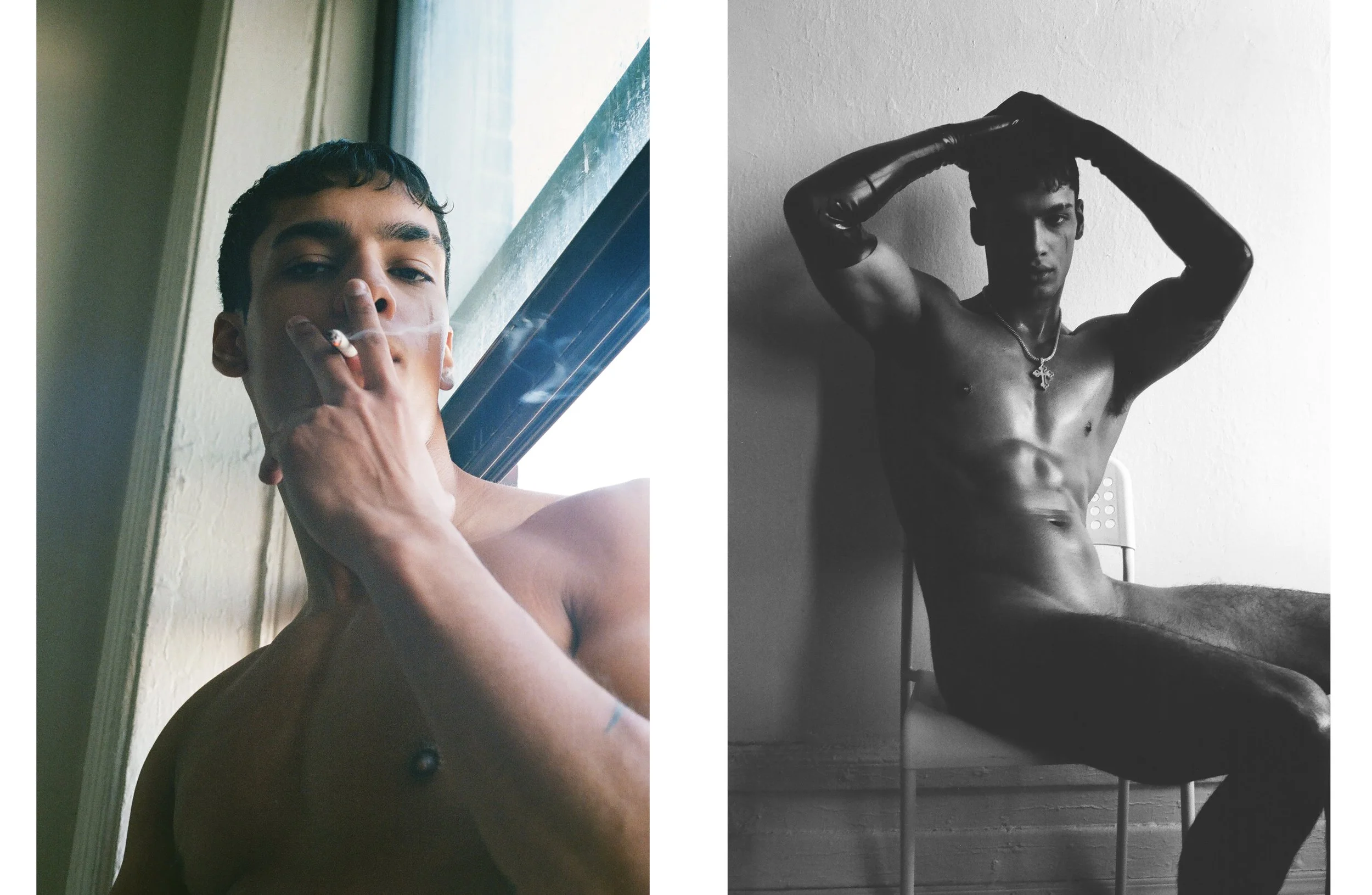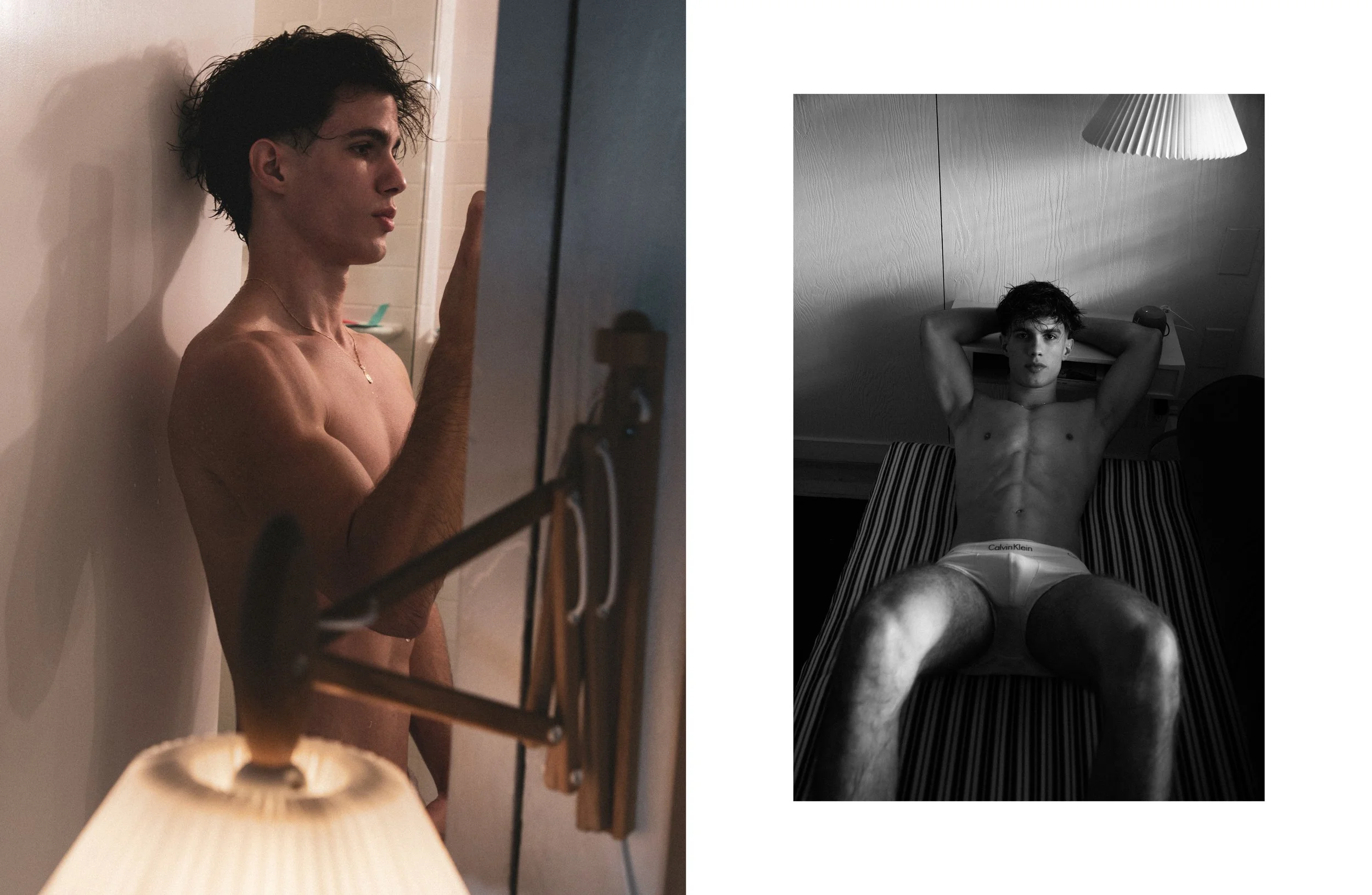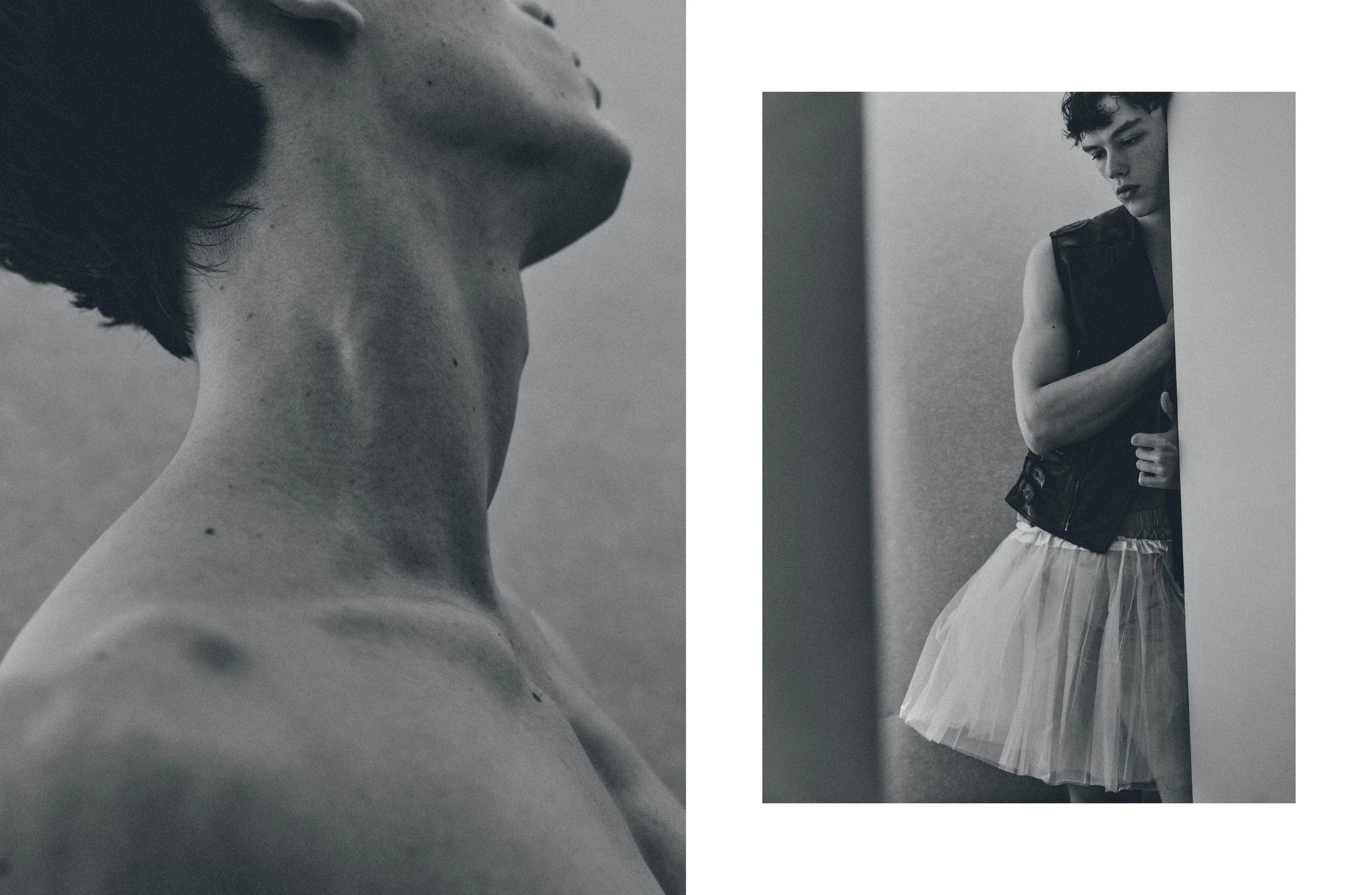HUNTER DOOHAN, LAMAR JOHNSON AND AARON HOLLIDAY SET OFF INTO THE DESOLATE UTAH LANDSCAPE FOR WILDERNESS. THE MILES OF ROCKY TERRAIN THAT BECAME THEIR HOME FOR THE UPCOMING WEEKS WAS THE SET OF A TRAGIC STORY. THE MOVIE IS A HEARTBREAKING GLIMPSE INTO THE WORLD OF “WILDERNESS THERAPY,” A HORRIFYING PRACTICE THAT SEES KIDS TORN AWAY FROM THEIR FAMILY UNDER THE PRETENSE OF REFORM. WHILE FIGHTING OFF NATURE AND INNER DEMONS ALIKE, CONNECTION BECOMES A MEANS OF SURVIVAL. AND, WHILE THE THREE ACTORS DIDN’T HAVE TO CONCERN THEMSELVES WITH WHAT THEY’D BE EATING—IN THEIR CASE, IN THE ONLY RESTAURANT FOR MILES AROUND, HELL’S BACKBONE—THEY STILL IMMERSED THEMSELVES IN THE SCENERY, LEARNING HOW TO SURVIVE LIKE THE BOYS THEY WERE PORTRAYING. AS HUNTER PUTS IT, “IT’S AS CLOSE TO METHOD YOU CAN GET WITHOUT BEING ANNOYING.”
BETWEEN TAKES, MEMORIES PILED UP: A SELF-IMPOSED SURVIVAL CONTEST TO SEE WHO COULD SPARK FIRE THE FASTEST, OR POOL SESSIONS THAT WOULD NEVER END. EVEN NOW, MONTHS AFTER, THE THREE SHARE A SPECIAL BOND. AS THEY CALL EACH OTHER FROM THREE DIFFERENT TIME ZONES, THEIR CONNECTION IS PALPABLE. THE TRIO REMINISCE ON THESE AND MANY MORE, OPENING UP ABOUT THE “LUCKY” EXPERIENCE (AARON’S WORDS, NOT OURS), FIRST IMPRESSIONS AND THE MAGIC OF FILMING A MOVIE ON LOCATION.
Full looks Zadig&Voltaire
How did you three first meet?
Lamar Johnson: Hunter and I did a project together called Your Honor. We had one courtroom scene together, and I thought he did a fantastic job. So when this opportunity came around and I knew that he was a part of the project, it was a no-brainer. I thought the script was really compelling. But then also just having an opportunity to work with Hunter and get some real screen time with him. And then I met Aaron on set. And Aaron is fantastic. He’s a lovely person. And I think we all collectively bonded really well while shooting this.
Hunter Doohan: When we came around to figuring out who Miles was going to be, you were the first person I brought up to Spencer [King] because of Your Honor. You were so good on screen. And we only had that one courtroom scene, but I remember it was so amazing. You ripped your prison jumpsuit off. Bryan Cranston was sitting back at the monitors and just went, “Oh my God.”
And then, Aaron and I have been best friends for like 10 years. We probably act the most together, because we do all our self-tapes together. So, I knew how amazing he was, but we never got the chance to do anything together before this.
Aaron Holiday: It was a cool journey to get here. You guys were trying to get the movie sold, so we did a table read. You had friends come and read the roles, and you had me, strategically, I think, had me read for mine. It all fell into place. Even through the filmmaking ups and downs, it was so smooth.
Lamar, we hadn’t spoken until you got there, but Hunter and I had been in that sort of pre-production phase together. Hunter more than me, but us being so close, I was definitely looped in. And even through all the craziness, there was just this thing in us that felt like this was supposed to happen. It was crazy. Up until the day before we even left, we were like, “Are we actually going to Utah?”
Left Full look Saint Laurent by Anthony Vaccarello
Right Full looks Dolce&Gabbana
I was lucky enough to see the movie. The landscape is obviously such a big part of the narrative. What was it like having to live in such a harsh environment?
HD: The actual environment is harsh, but it was true to that world. Most of these wilderness camps are in Utah, and our director, Spencer, went to one as a teenager, so that was super important to him. As far as the actual filming experience, because the material was so heavy, when we weren’t shooting, we had to blow off steam together. We were all basically living together.
LJ: The subject matter made us all handle it with such respect. We were all aware of what we were dealing with and wanted to tell it in its truest form. But, to be able to do that, we had to be grateful to be in the incredibly beautiful landscape with beautiful people. It was a very interesting rollercoaster of emotions.
AH: Even just for me and Hunter specifically. We are best friends making this movie together—I’m getting chills just talking about it—it was so special. And then to stay in this farmhouse on this ranch land together as friends, and then build new relationships with Lamar and our other co-star, Matt [Gomez Hidaka]. It was an honour to get to shed light on something so serious and to also be able to have this special experience with these incredible people. I think we all feel like the luckiest guys in the world. I do.
HD: The environment was perfect. It really helped us all ground ourselves in what we were portraying. It was so easy to go to work every day because you knew you were going to be surrounded by good people, and we all just connected deeply, which was so important for this type of story. And then, you know, when we’d get back from set, we’d hang out, play pool, talk. It was just such a good vibe.
Left Full look Emporio Armani
Right Full looks Levi’s
Were you guys aware of the wilderness camps phenomenon before you read the script?
LJ: Personally, I wasn’t. I didn’t know anyone who had gone through it. I’d never even heard of wilderness therapy camps before I read the script. That’s what made it so compelling. It was something real that I hadn’t been aware of. And that’s what drew me in. It made me feel like this is something that exists, but it’s not talked about. So that challenge was a big part of why I wanted to do it.
HD: Yeah, same. I didn’t really know the full extent of it. I had kind of heard of the “troubled teen” programs or boot camps, but I didn’t know that it was this whole multi-billion-dollar industry. It’s crazy. There’s such a huge network of these private organisations, and a lot of them operate without any real oversight. Parents think they’re helping, but they’re sending their kids into this system that’s totally unregulated. I knew of it vaguely, but not how bad it really was. And then talking to Spencer, hearing his experience, it was really eye-opening. The way he described it — the manipulation, the trauma, the lack of any real therapy — it’s horrifying.
AH: I’d heard of it, but not in the way this movie shows. I knew of movies like Holes, where kids are sent away to these harsh camps. And I had maybe heard of one or two people growing up who got sent away to “programs” or whatever. But I didn’t realise how extreme it can get, how traumatic. There are kids who come out with lifelong scars from it. So, reading the script and realising it’s based on something real, something that’s still happening, it hit hard.
Left Full look Celine
Right Full look Saint Laurent by Anthony Vaccarello
The material is so heavy. What did you guys do to wind down after long days on set?
HD: We went on this amazing camping trip before we even started shooting, which immediately bonded us. It was like a crash course in wilderness training. We learned real skills, like how to make fire from scratch, set up camp, everything. That experience really grounded us. It was like, okay, this is what our characters would actually be doing. And also, it brought us closer together, which helped so much once filming started.
AH: It was so cool. Like, it was method without being…
HD: Annoying? [Laughs]
AH: [Laughs] Without being actually method. We didn’t have to “pretend.” We were actually out there doing it. We were bathing in rivers, cooking over campfires, sleeping outside. It really connected us to the environment. It also gave us a kind of mental toughness, because when we started filming, we already knew what that felt like. It made the performances that much more real. It was hard, but also beautiful. You’re out there, doing something meaningful, with people you love. It’s magic.
Left Full looks Zadig&Voltaire
Right Full look Celine
Who was best and worst at making fire?
HD: Oh, we might need to check the videos for proof on that one! [Laughs] We all had our moments. Everyone managed to do it eventually, though. It just took some patience.
AH: [Laughs] Yeah, definitely. I’d probably be the first to crack in real life, though. Like, “Where are my Hot Cheetos?!”
Left Tops The Frankie Shop
Right Full looks Levi’s
You had someone on set who actually went through the experience. Did he tell you anything that helped shape your performance?
HD: Working with Spencer, our writer/director, was really powerful because everything in the script came from his real experience. Hearing him talk about it was really impactful. You could feel how personal it was for him. That gave the project so much weight. And he trusted us with that, which was huge.
AH: What struck me most about Spencer was his compassion. Even on the hardest days of filming, he would pull everyone together and talk about how he was feeling. If something was hitting him emotionally, he’d share that with us instead of hiding it. That vulnerability set the tone for the whole set. It reminded us that this story wasn’t just a movie to him; it was part of his life. And that energy trickled down to everyone.
LJ: That’s what made this such a special experience. Spencer gave us so much trust. It’s hard to write something that personal and then let other people take it and make their own choices with it. But he did. He gave us freedom while also being deeply connected to the truth of it.
Full look Saint Laurent by Anthony Vaccarello
The movie exposes such a specific reality, but it also has these wide, universal themes. What do you hope audiences take away from it?
HD: I hope it shines a light on what’s happening in these camps, for sure. But also, beyond that, I think it’s about friendship and survival, how connection gets us through. These boys go through something so traumatic, but what keeps them alive is each other. That’s what I hope people feel when they watch it.
AH: Yeah, totally. It’s that element of boyhood and brotherhood, that trust, that caring for one another. That’s what makes it beautiful to me. Because even though they’re in such a dark place, there’s still hope in the way they find love and connection. These kids are dealing with trauma, but they’re still just kids trying to survive together.
LJ: It’s a human story. It’s about resilience. These boys are completely isolated, so they become each other’s family. That’s what keeps them going. That’s what I hope people see: that there’s light in the darkness.
HD: It’s also interesting because our characters are in this situation where they know they need help, but instead, they get sent somewhere more dangerous. The counsellors manipulate them. They manipulate their parents. Parents are often misled into thinking they’re doing the right thing when really, they’re being taken advantage of. Spencer told me after the fact that when people left these camps, they weren’t even allowed to exchange contact information. Pages were torn out of their notebooks. They were isolated even after they got out. He said years later, he started finding the other kids he was with online, reconnecting with them, realising they’d all gone through the same thing. It’s just horrifying to think about.
Left Full look Saint Laurent by Anthony Vaccarello
Right Full look McQueen
Left Tops, pants and shoes The Frankie Shop, jewellery Ugo Cacciatori
Right Full looks Zadig&Voltaire
It’s heartbreaking. But as a film, it’s also visually stunning…
LJ: It was breathtaking. I’d never been to Utah before, and I fell in love with it. The landscape is like another character in the movie. You can’t fake that. We saw everything: red rocks, forests, open fields. It’s so cinematic, but also humbling. It makes you feel small, in the best way.
HD: The landscapes change as the boys’ journey evolves. It’s almost like the environment is reflecting what they’re going through emotionally. Spencer and Sean [Mouton], our DP, did an incredible job capturing that. They really leaned into the natural light and the textures of the land. It’s stunning.
AH: We basically lived there. There was one restaurant in town, called Hell’s Backbone Grill. The owner is like a literal angel. She fed us every day. It’s all farm-to-table, seasonal menus, everything fresh. We’d go there after long days of shooting, and she’d talk to us about food and community and life. She even came to set one day. We loved her so much.
HD: [Laughs] Yeah, she was like our guardian angel out there. We were in the middle of nowhere, and somehow we were still eating better than we do in L.A.
AH: Yeah, seriously. That restaurant was like the heart of the town. Everyone there was so kind. It made it feel like home, even though we were far from everything.
Full looks Levi’s
Interview by Pedro Vasconcelos
Photography by Shane Mccauley
Fashion by Oretta Corbelli
EIC Michael Marson
Grooming by Candice Birns
Casting by Imagemachine cs
